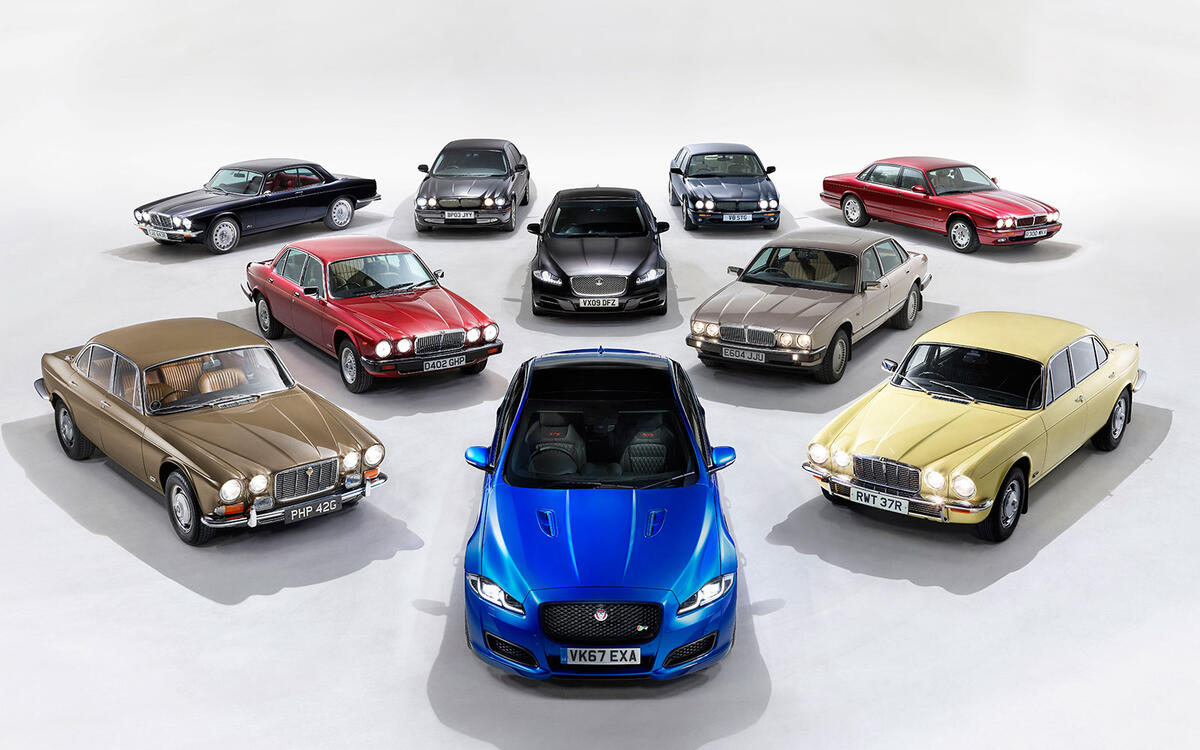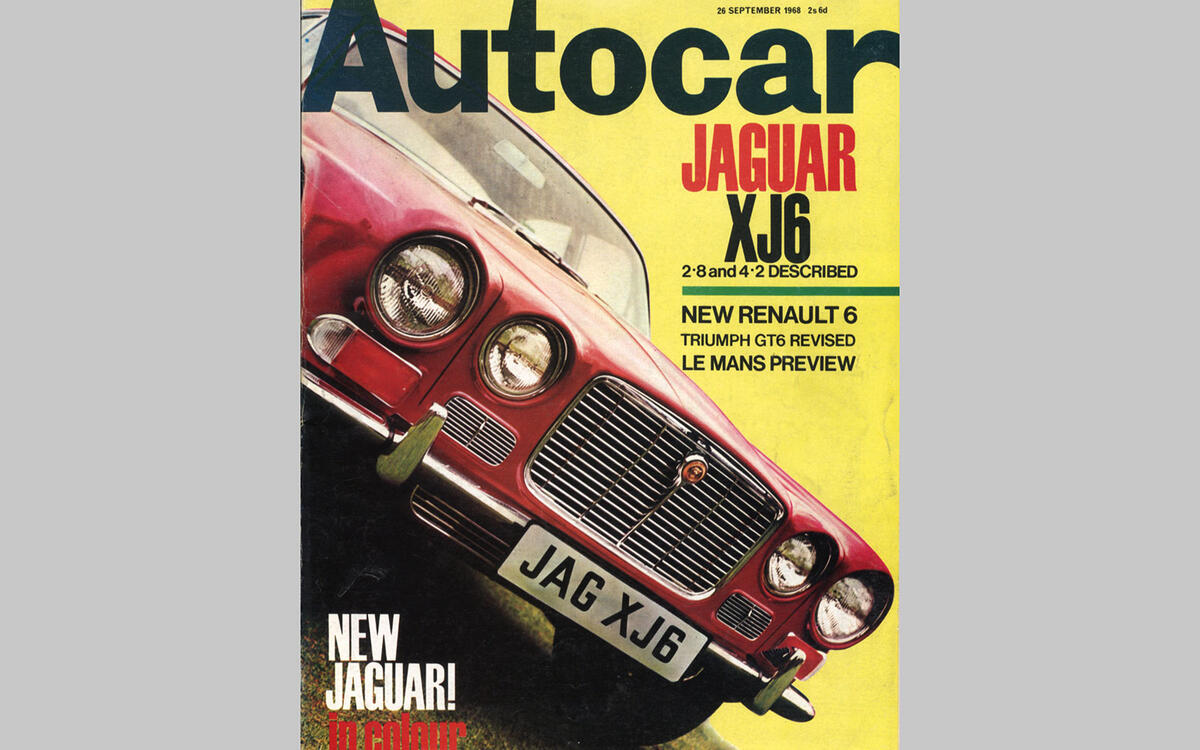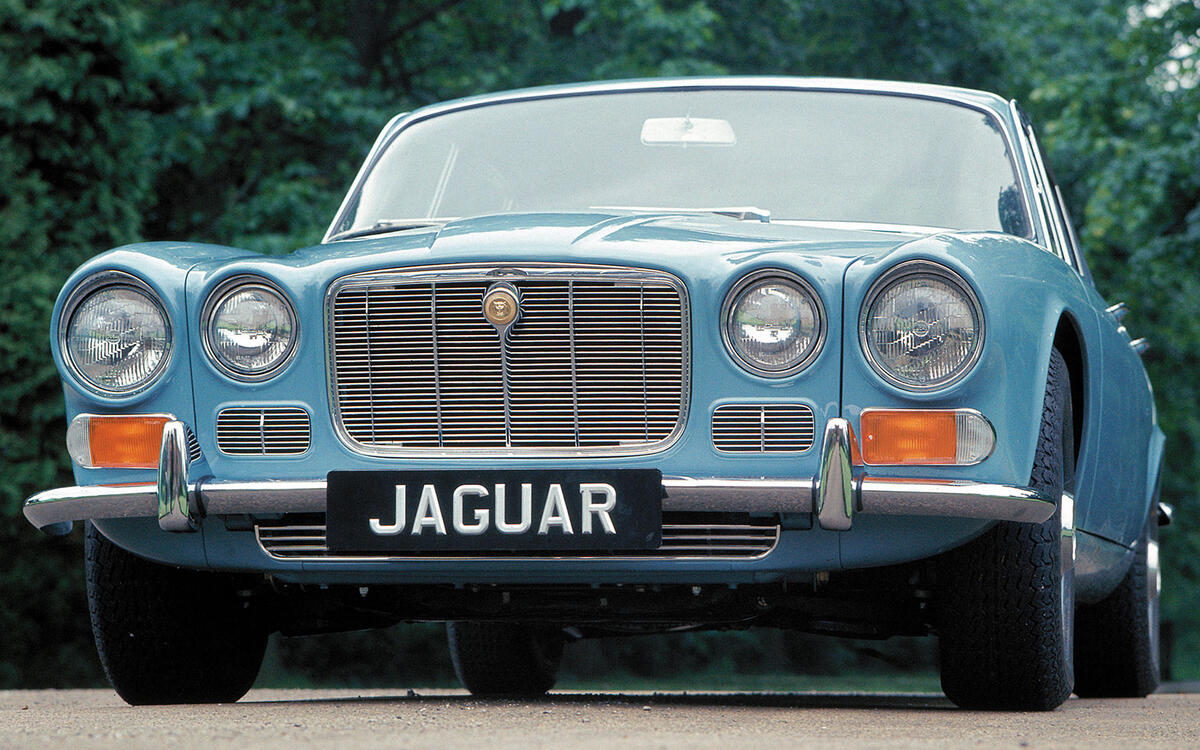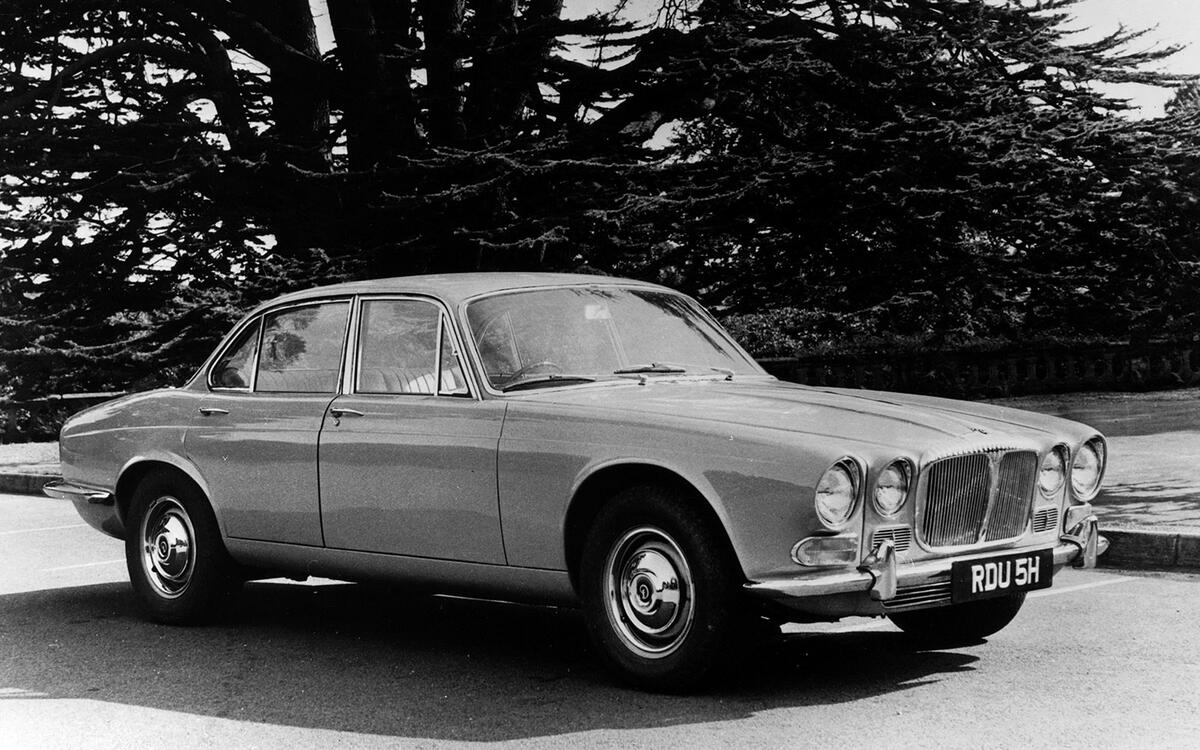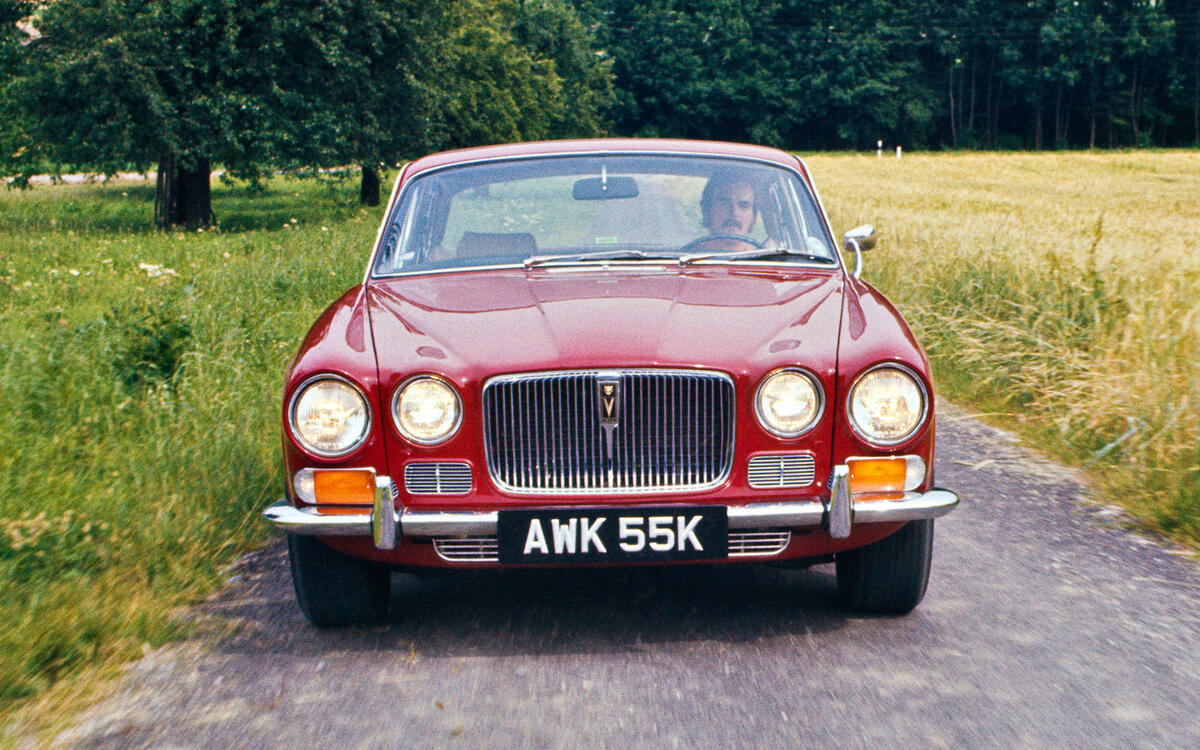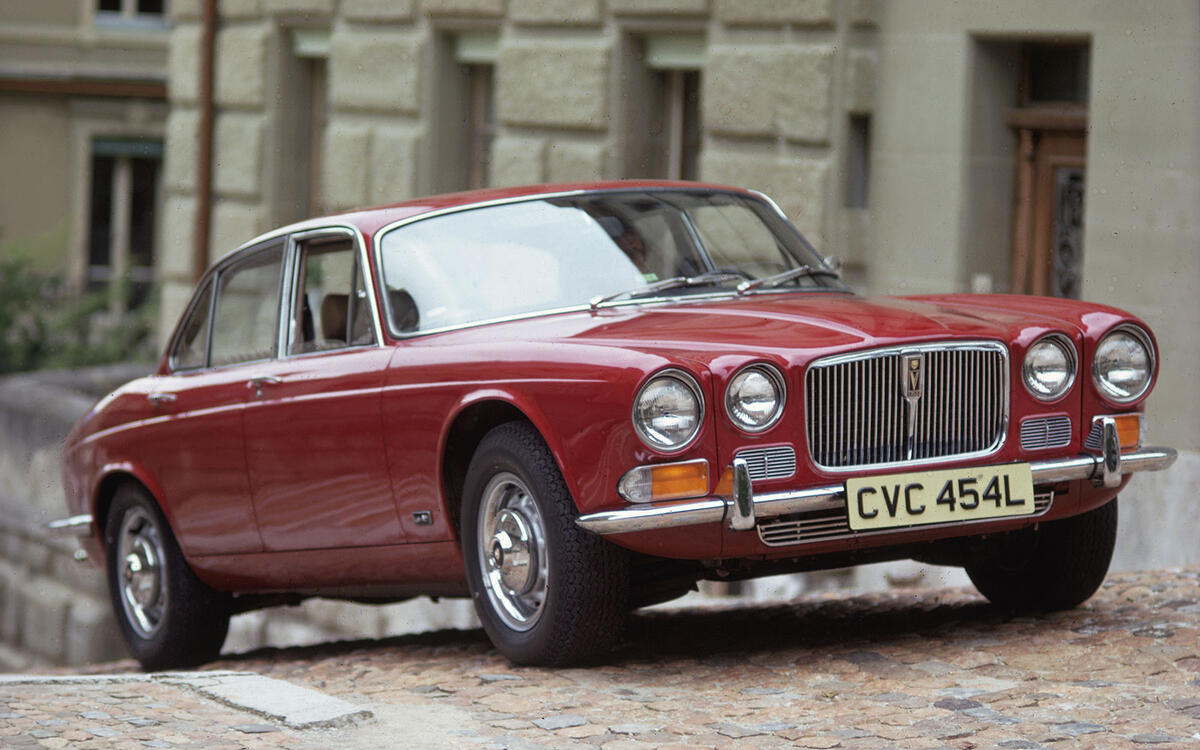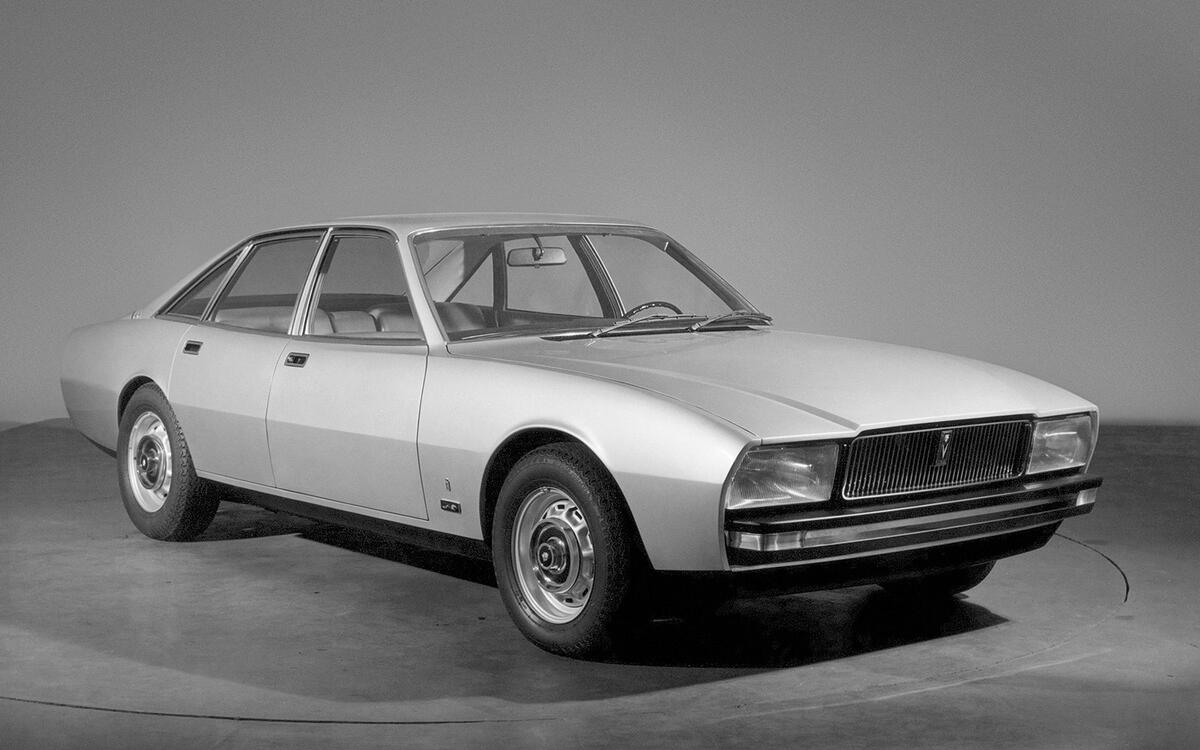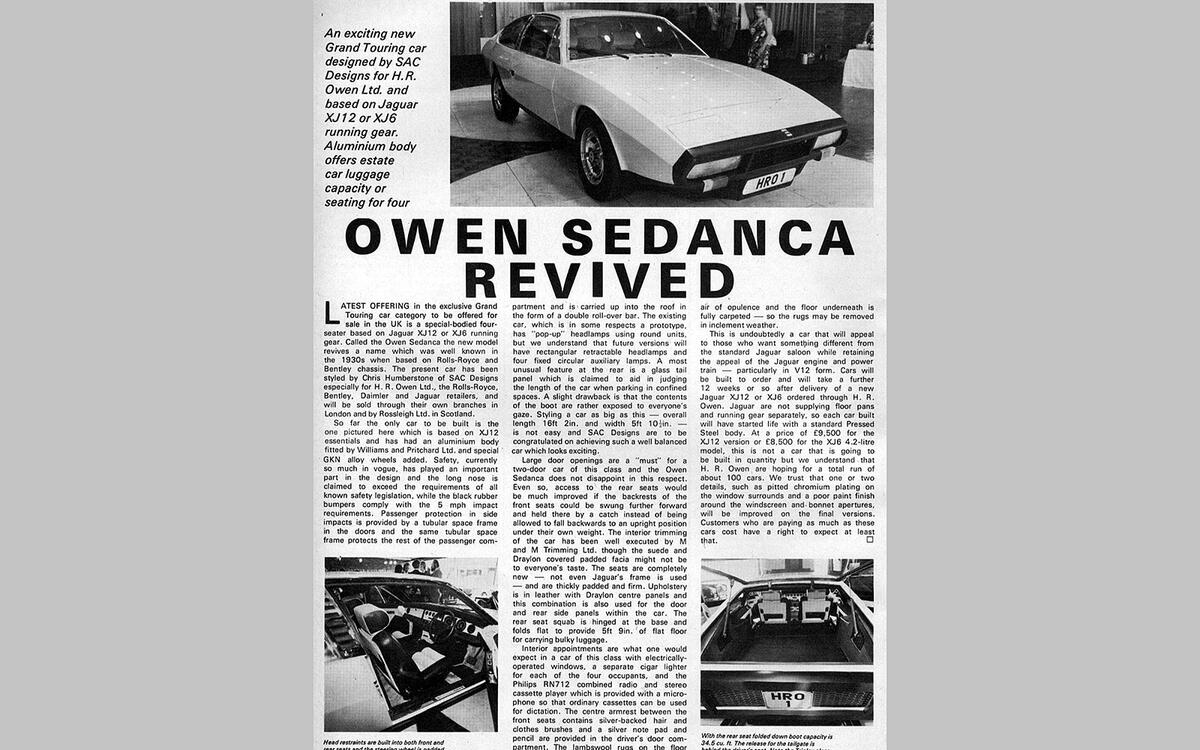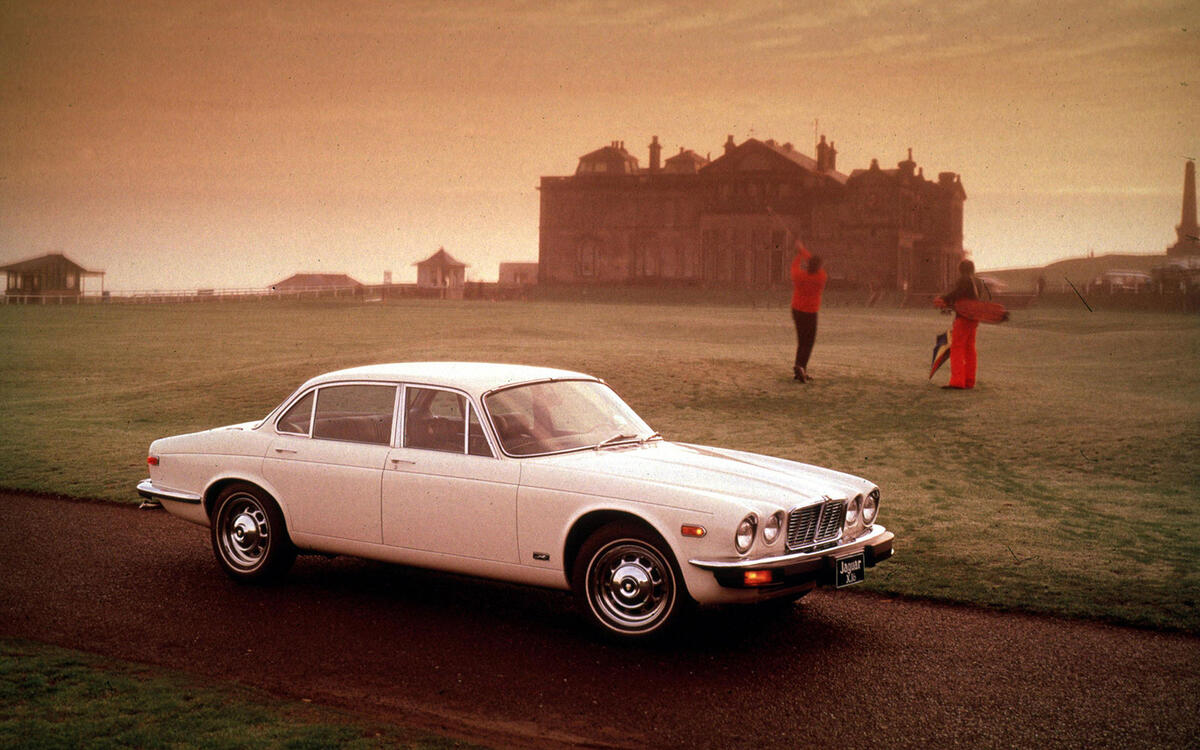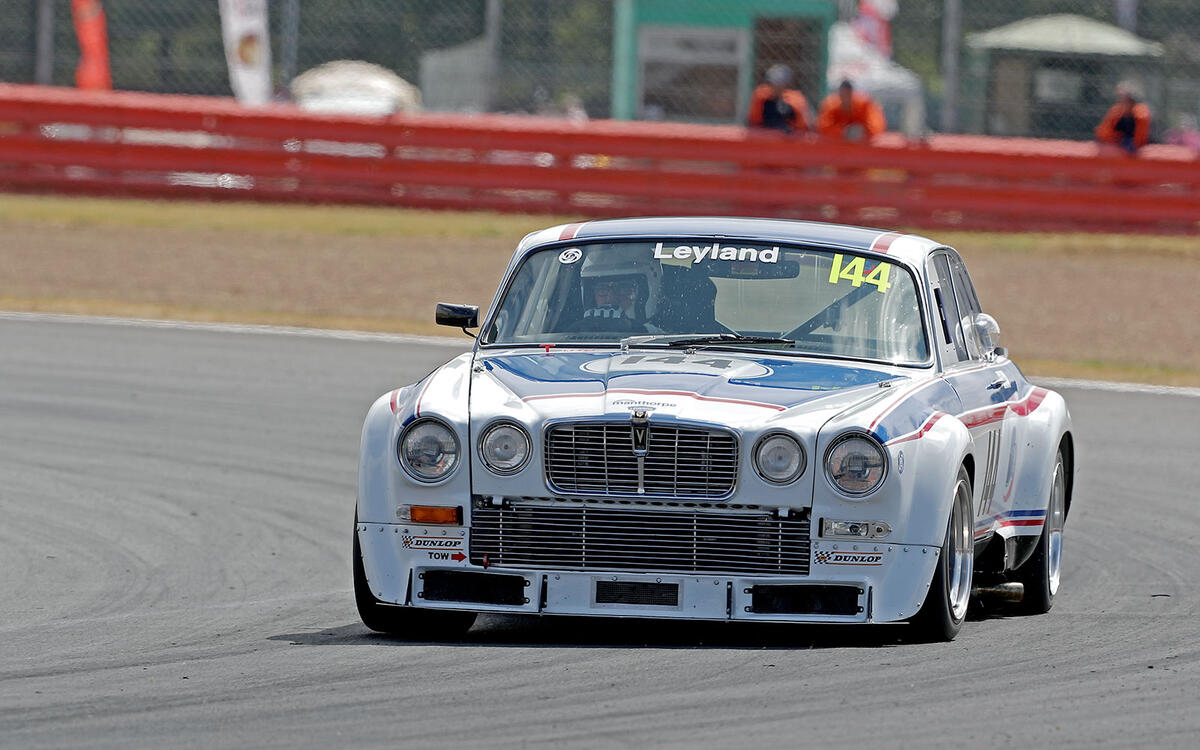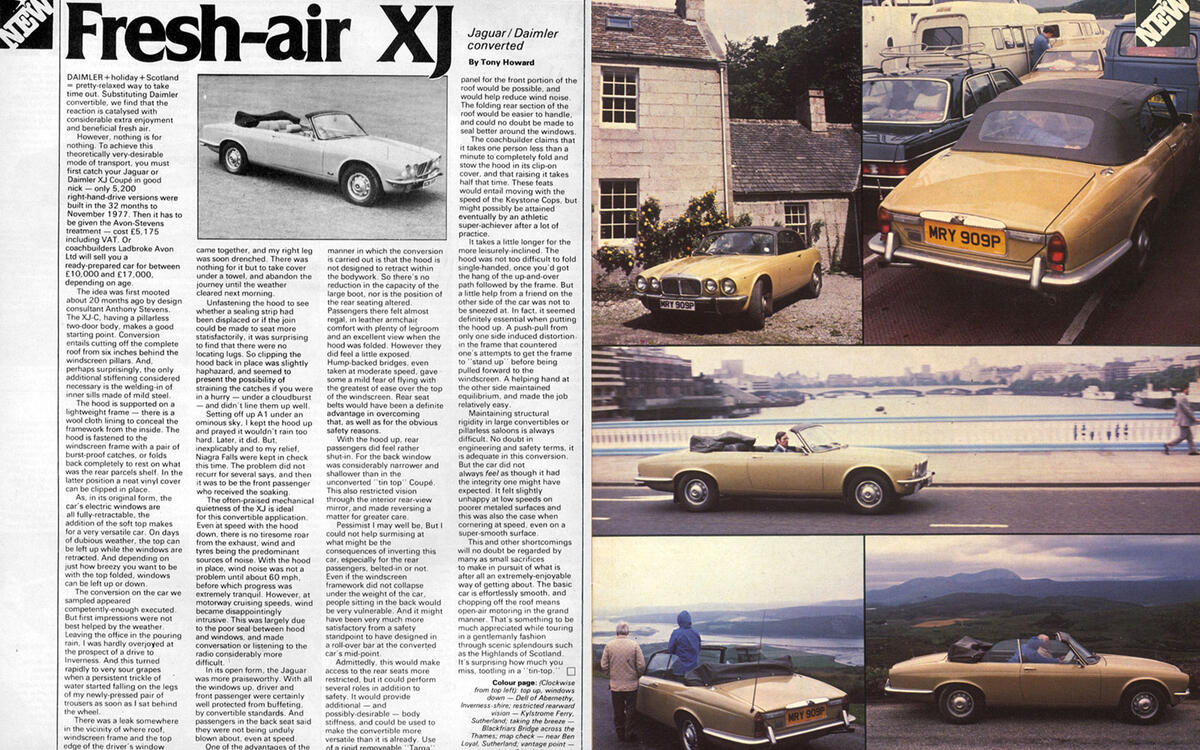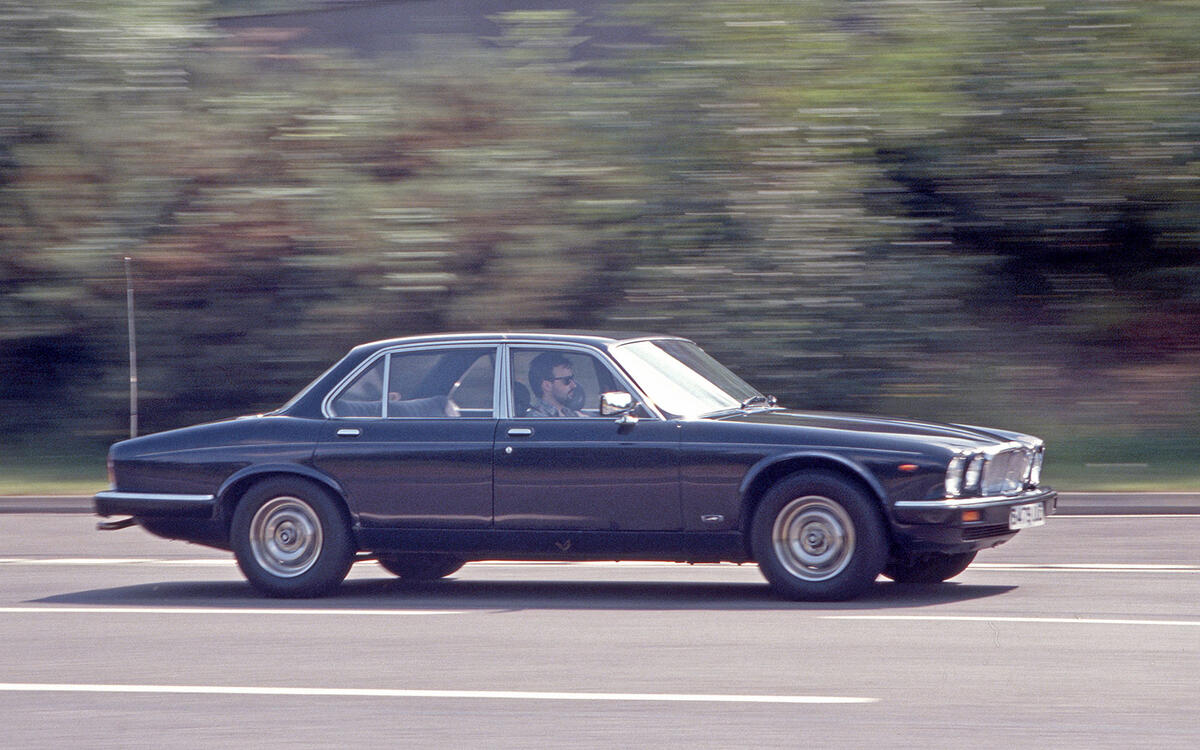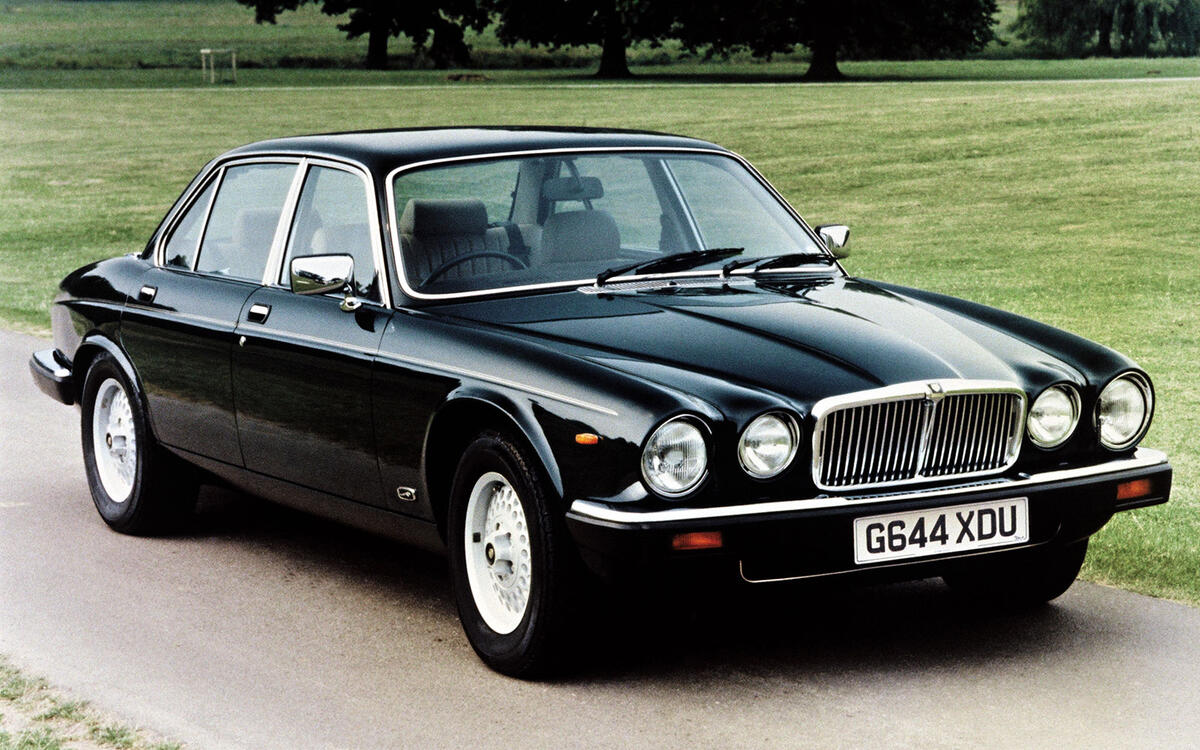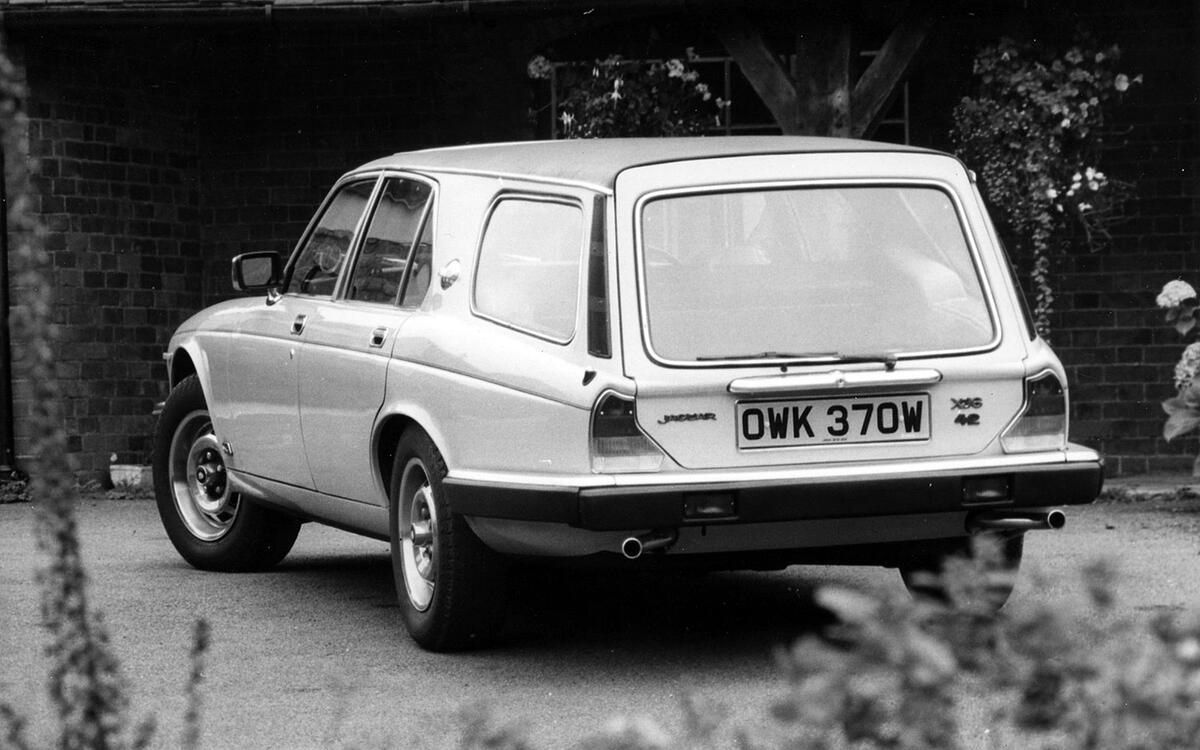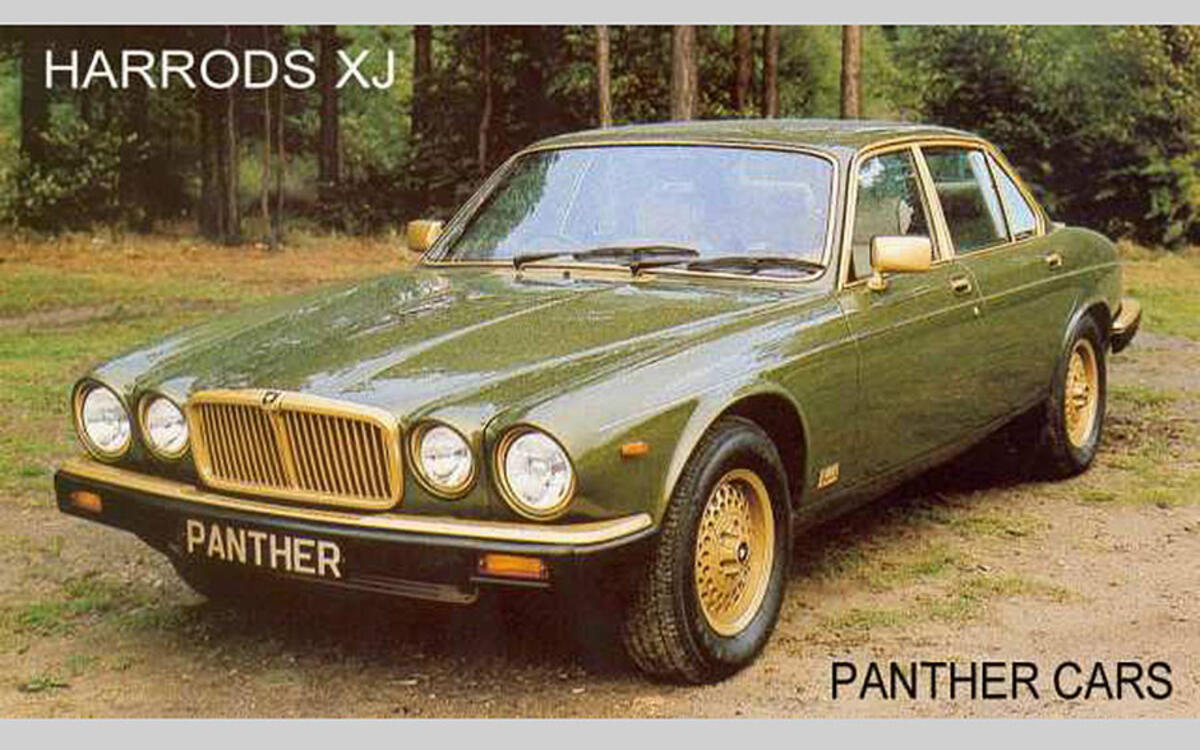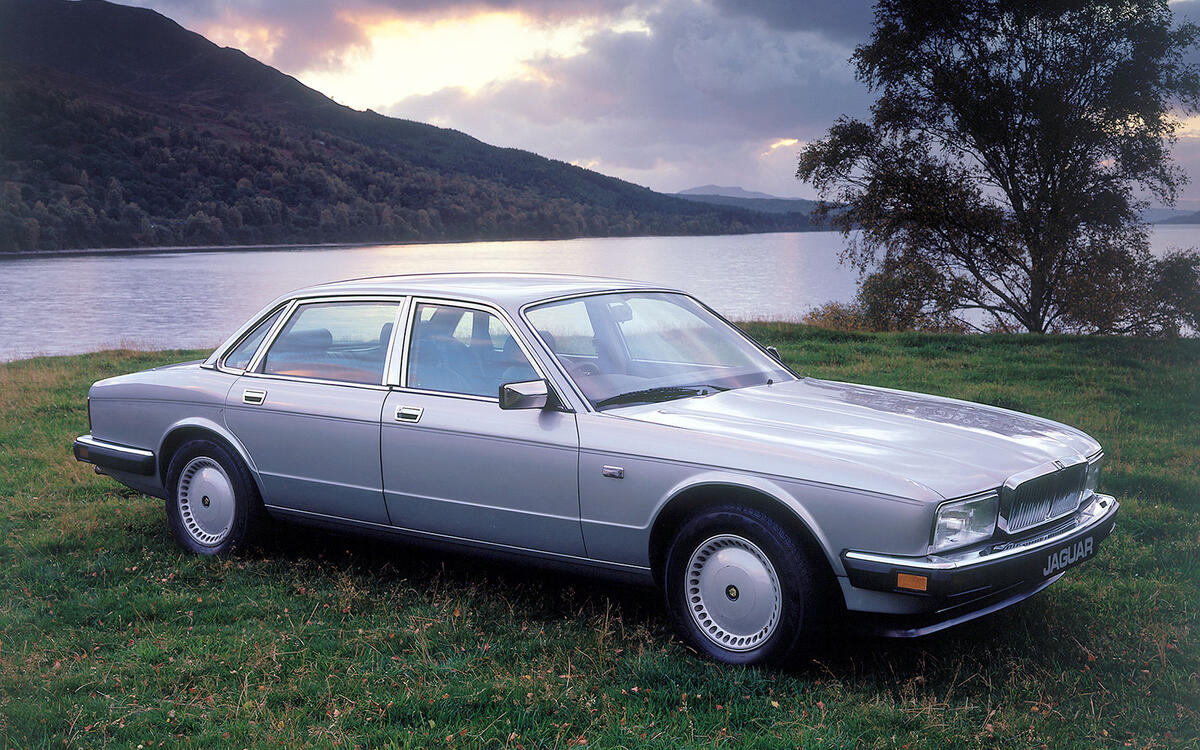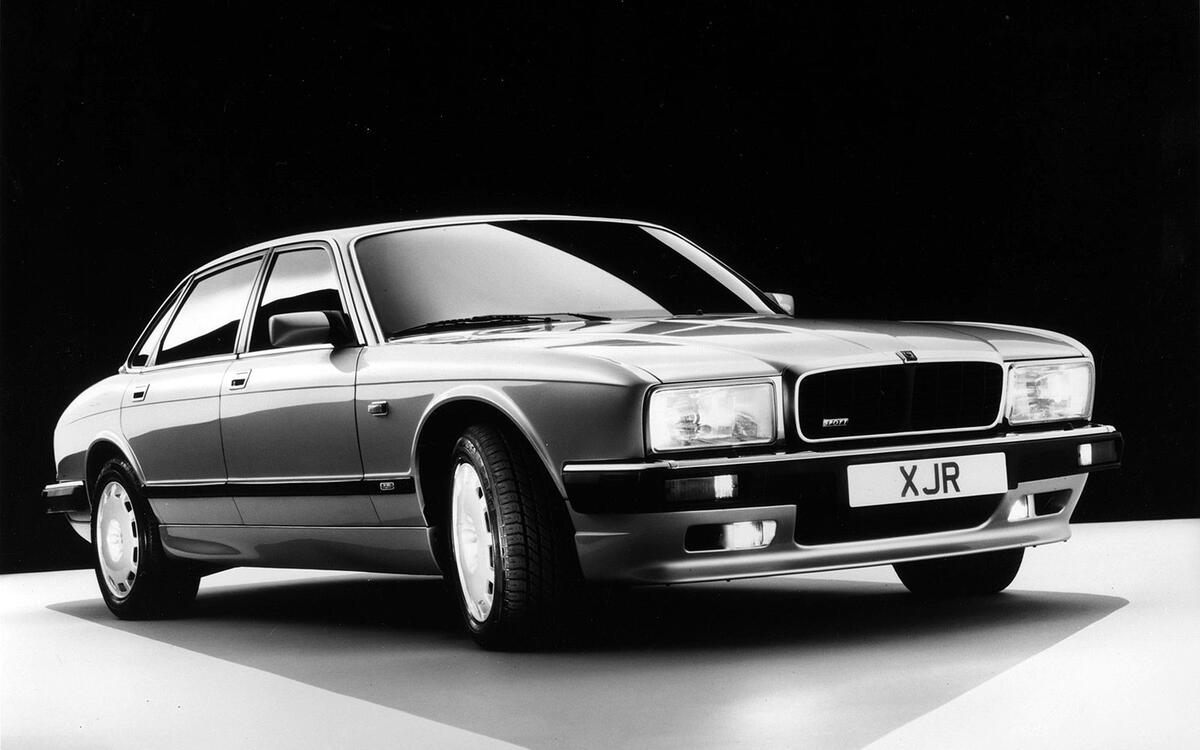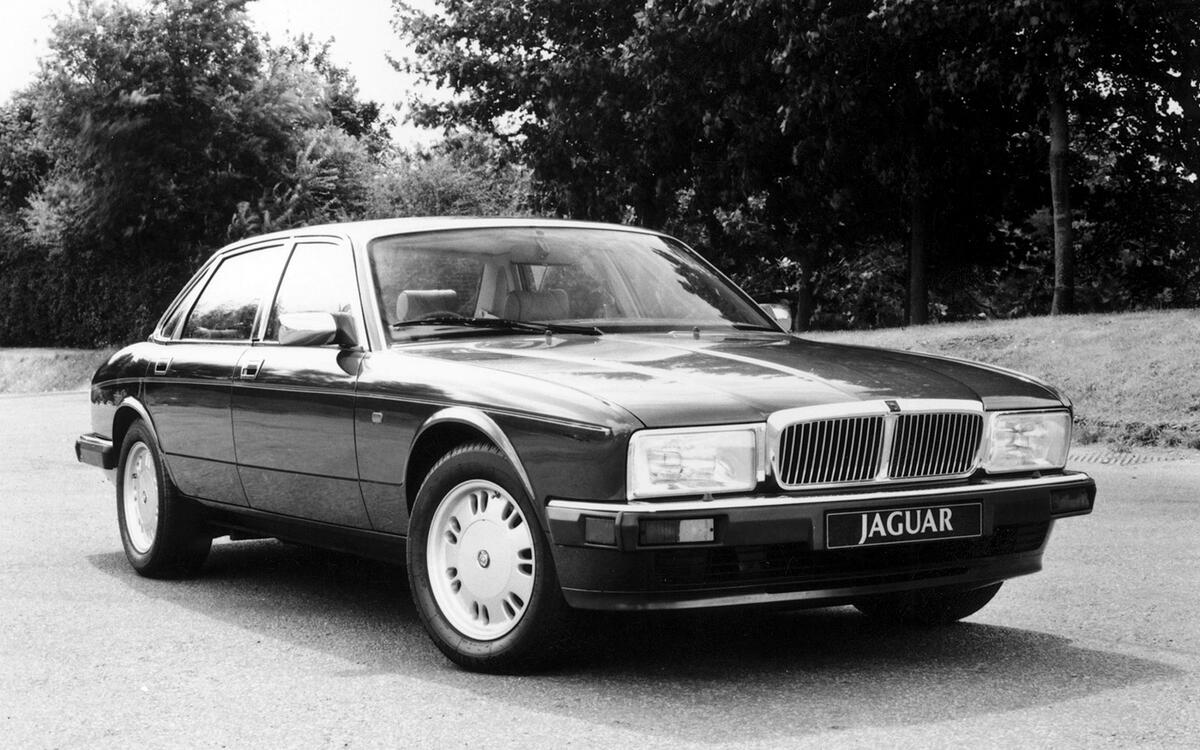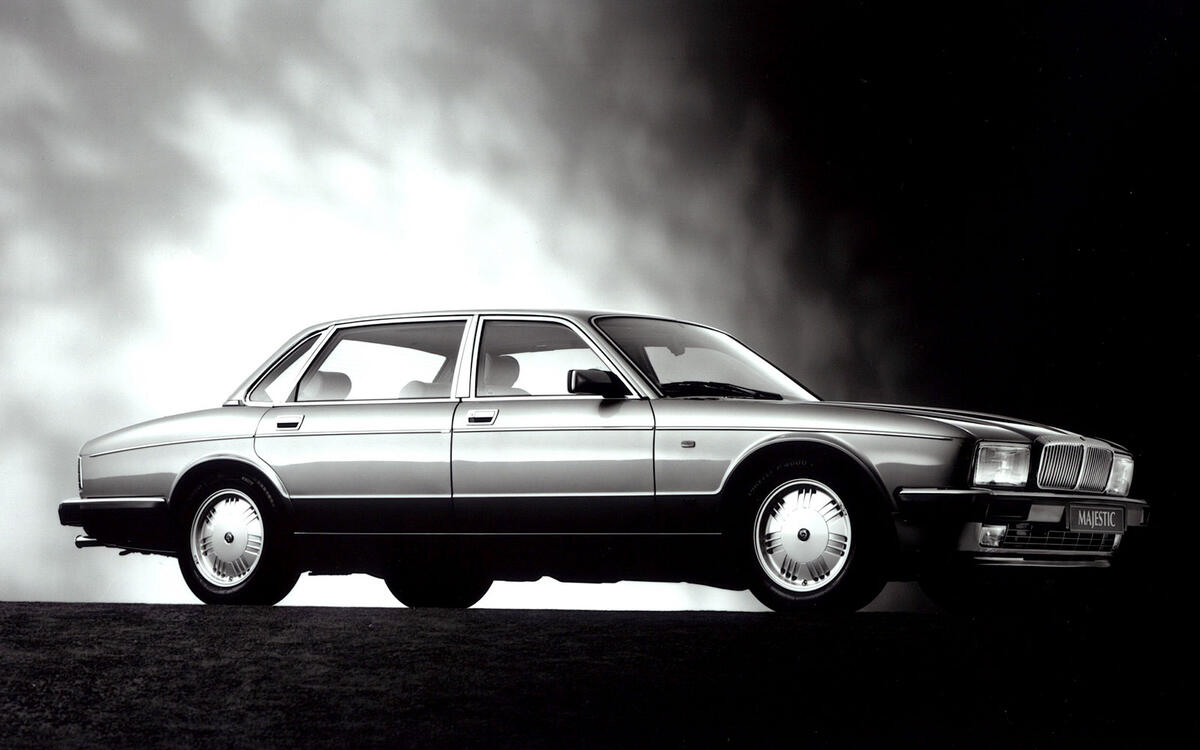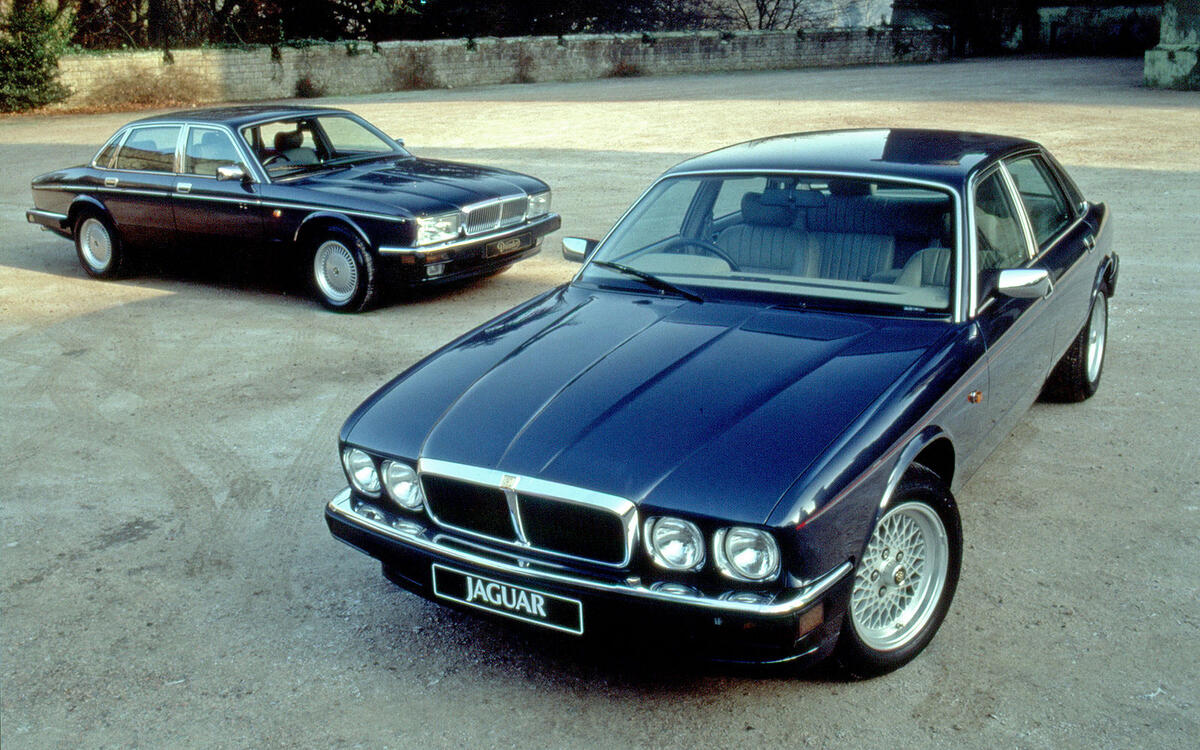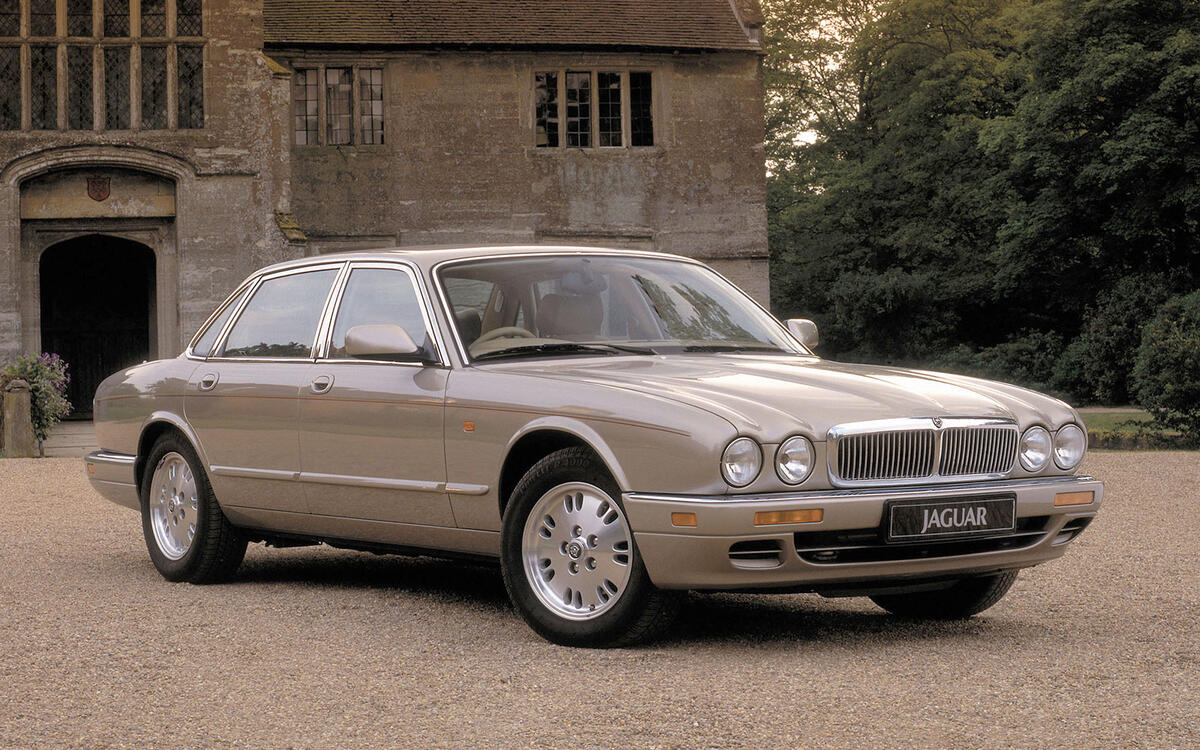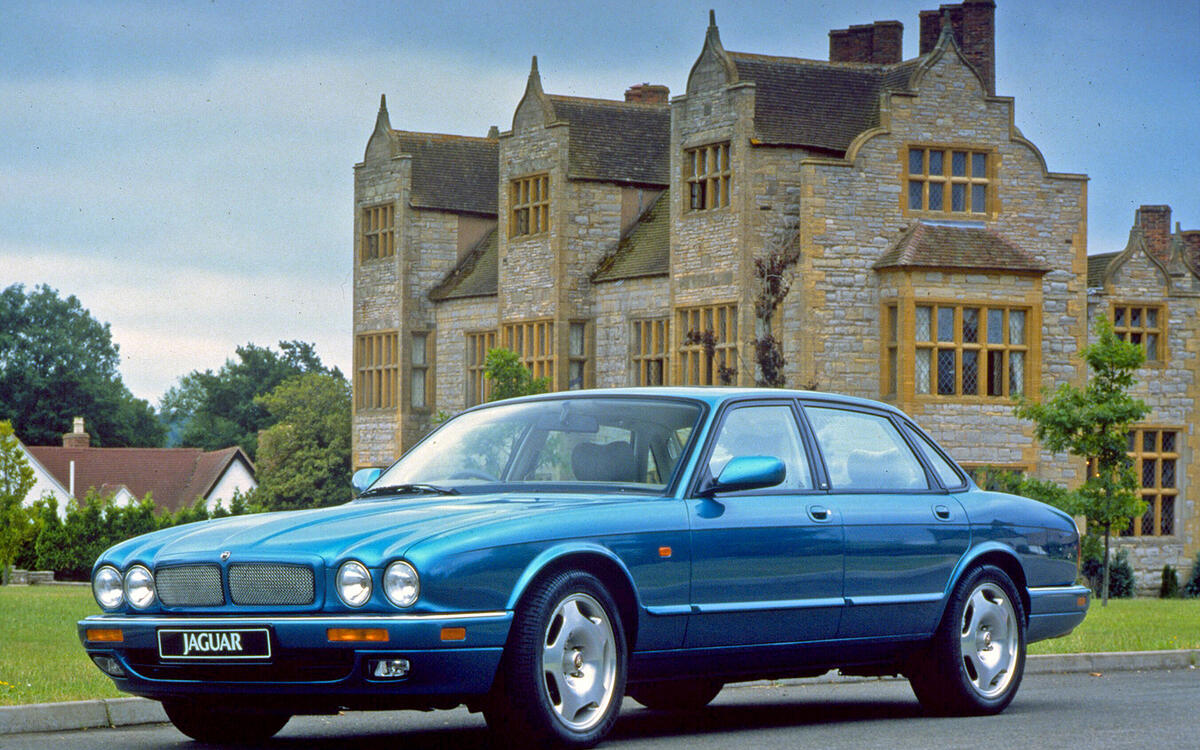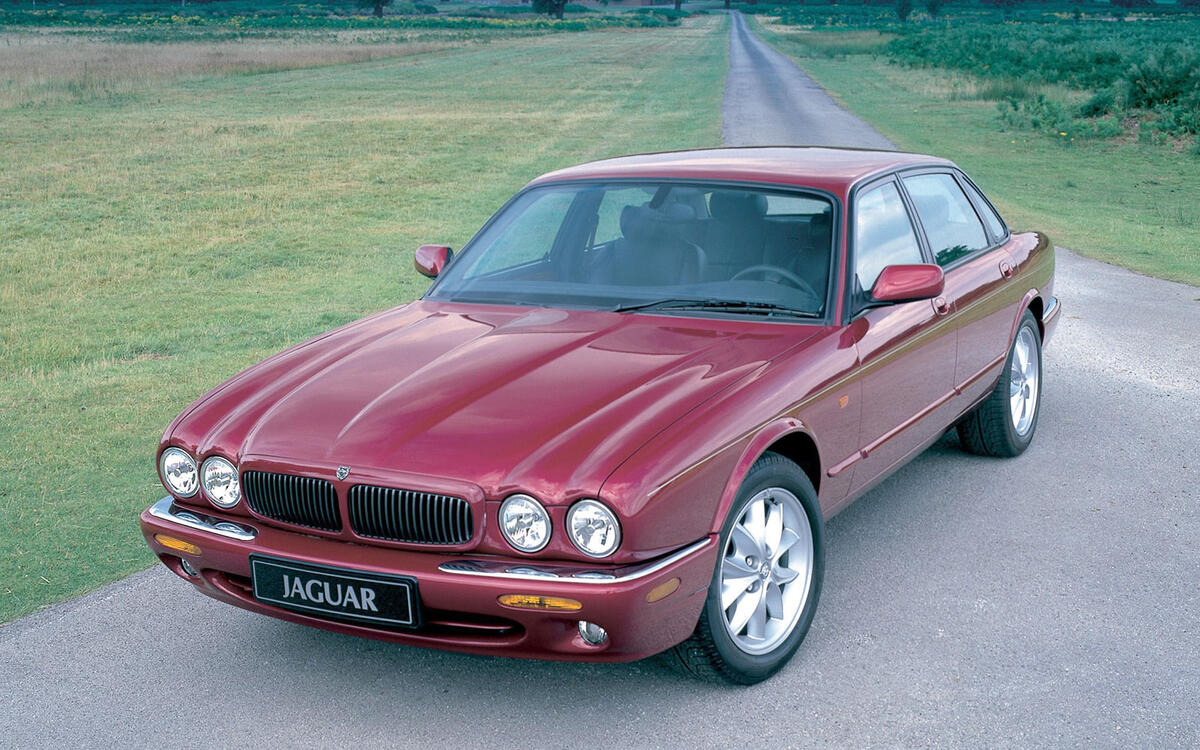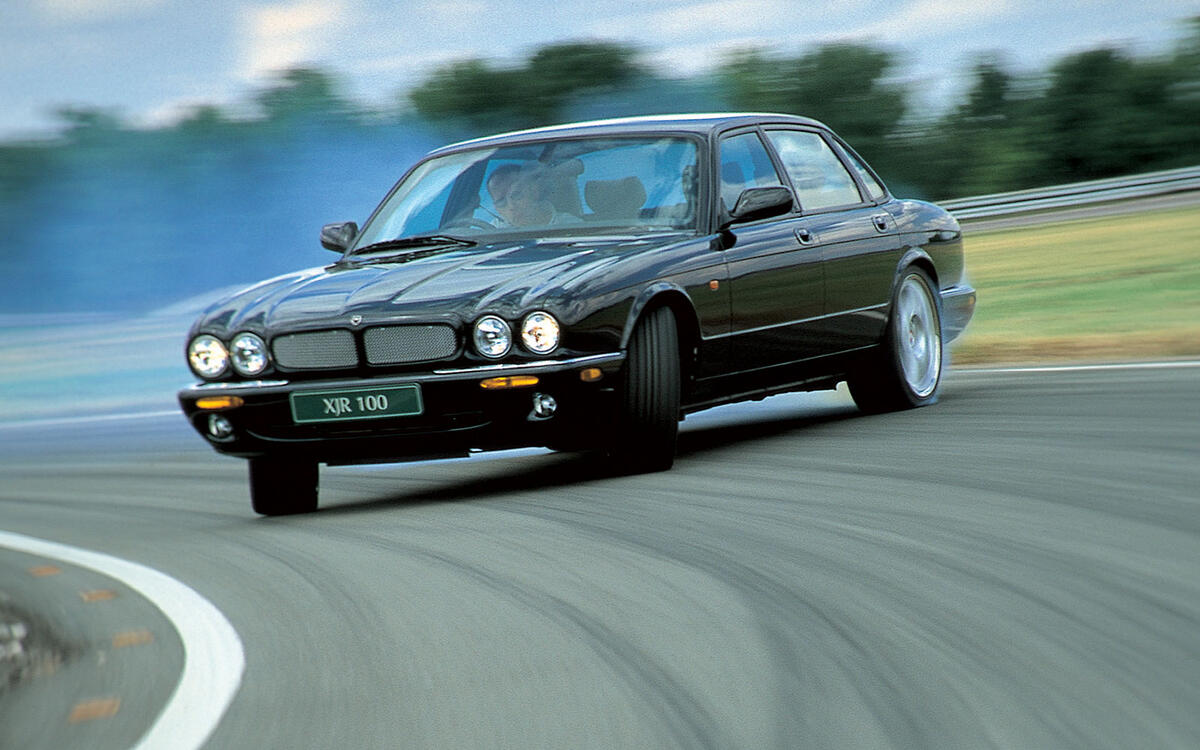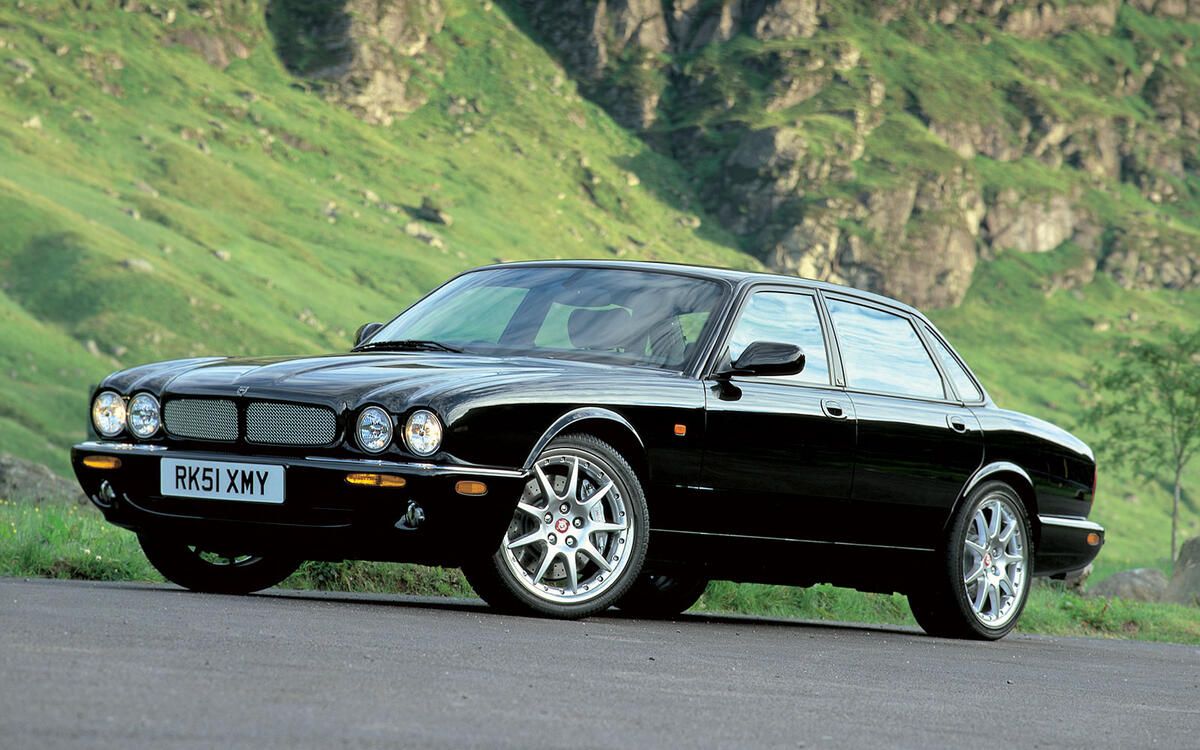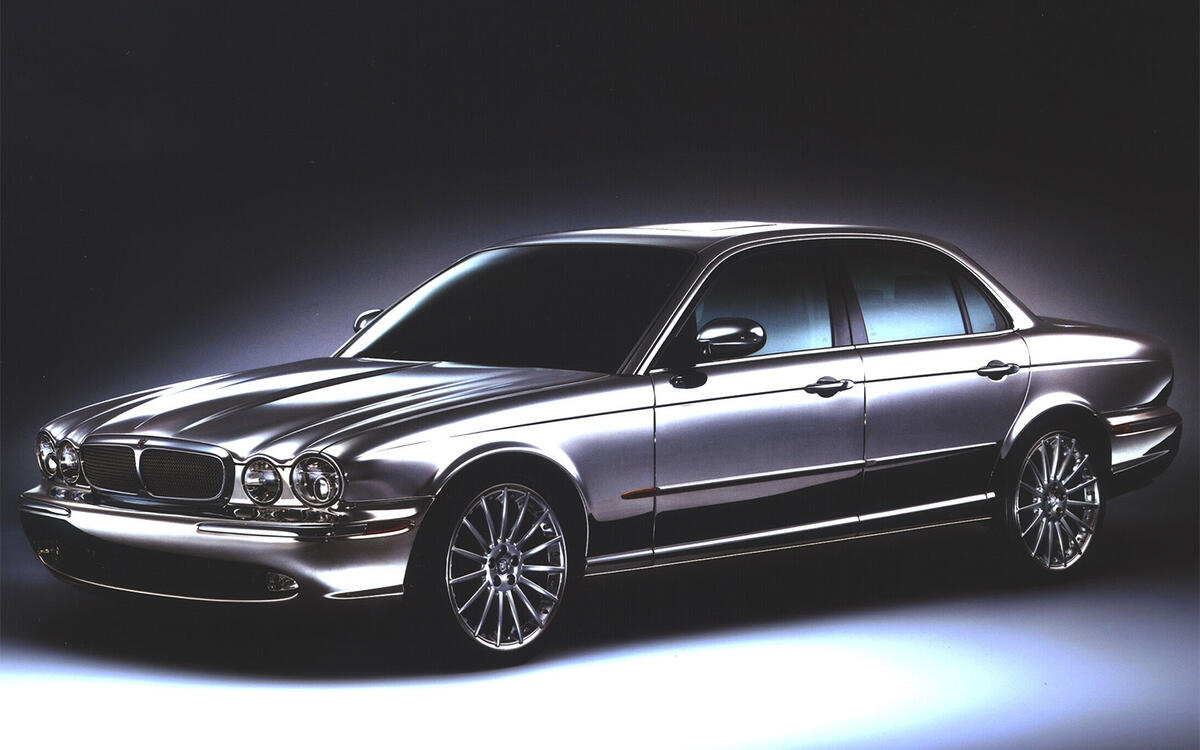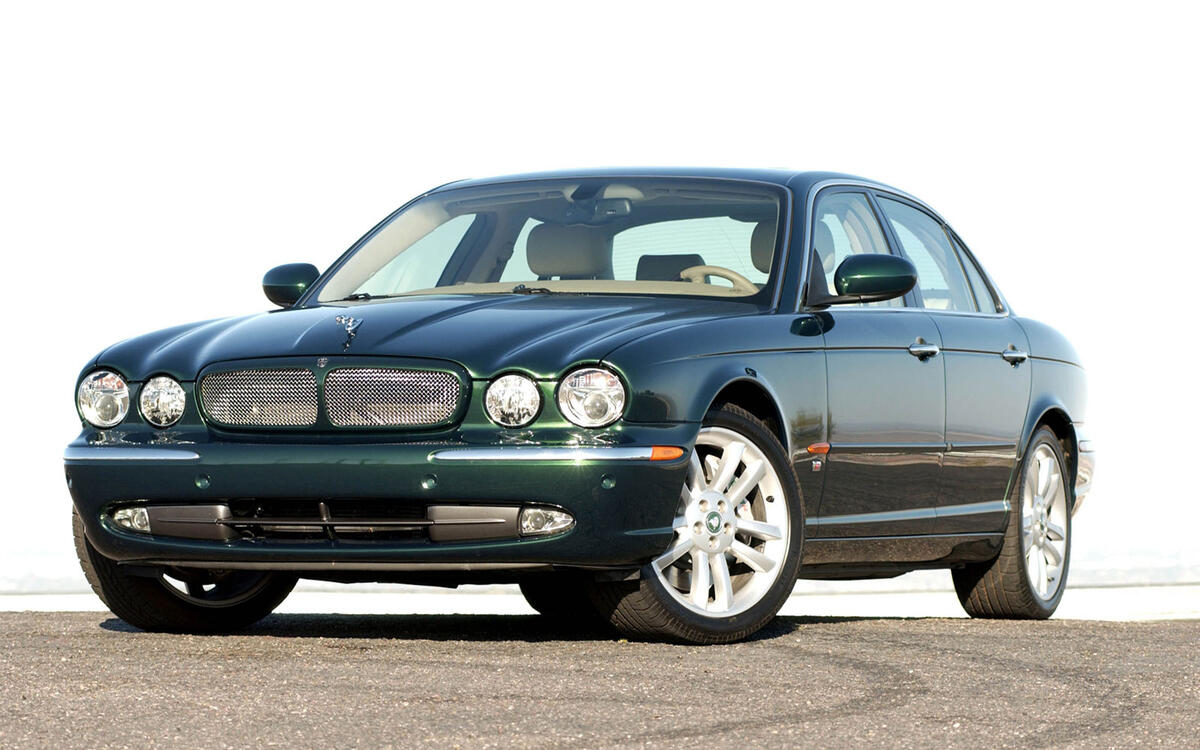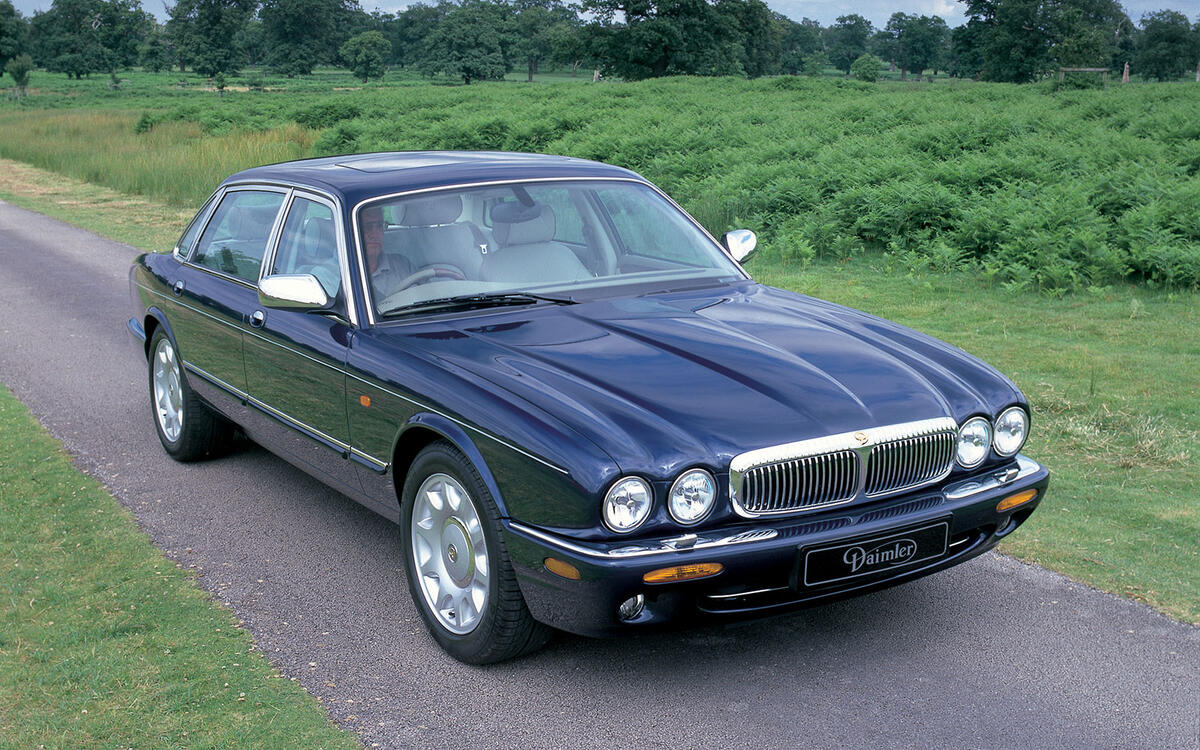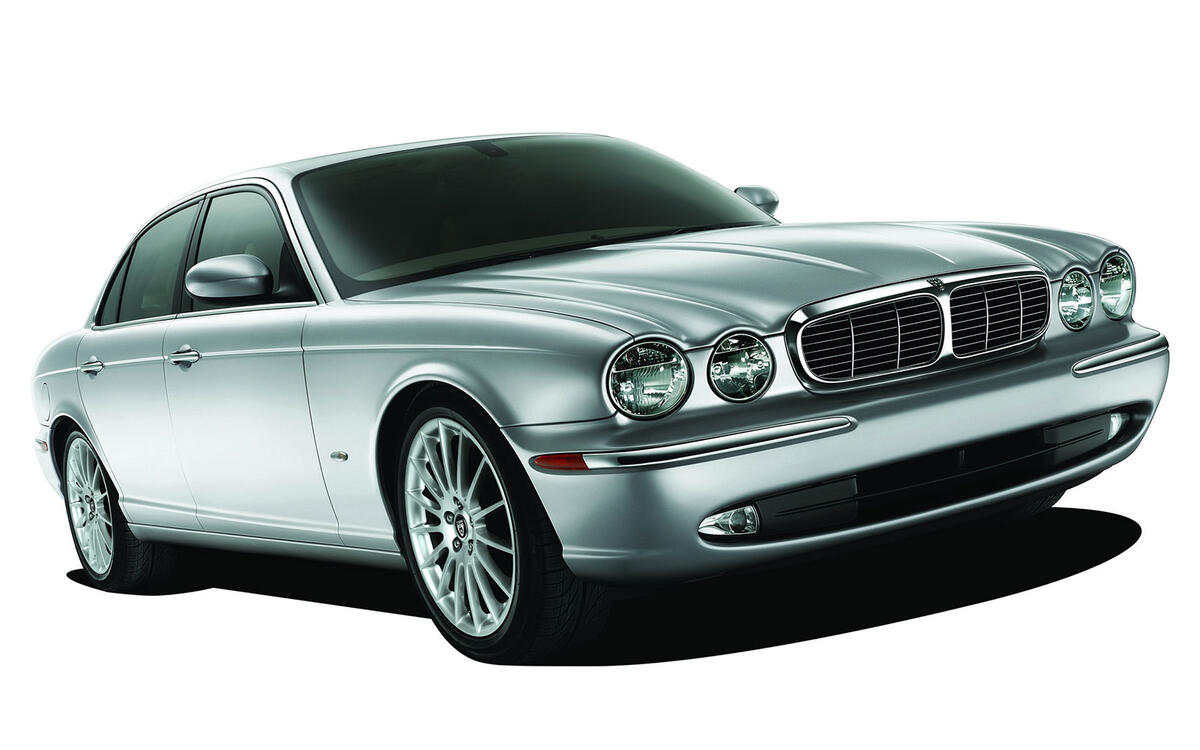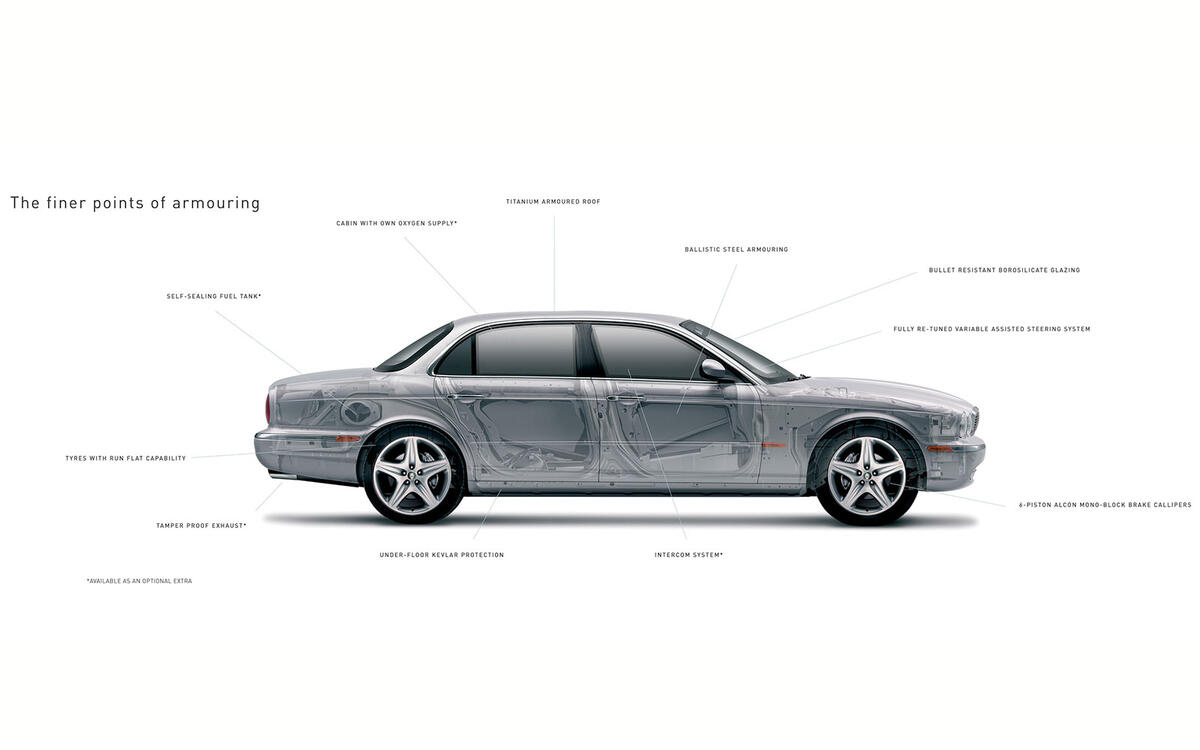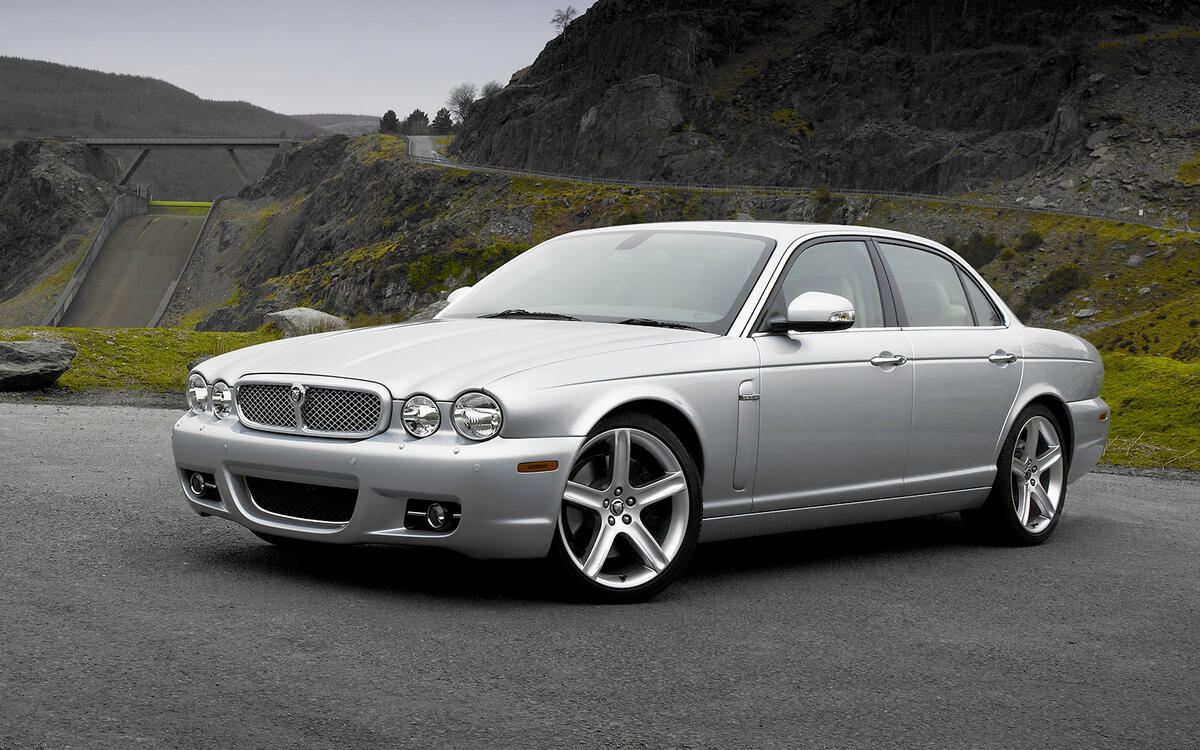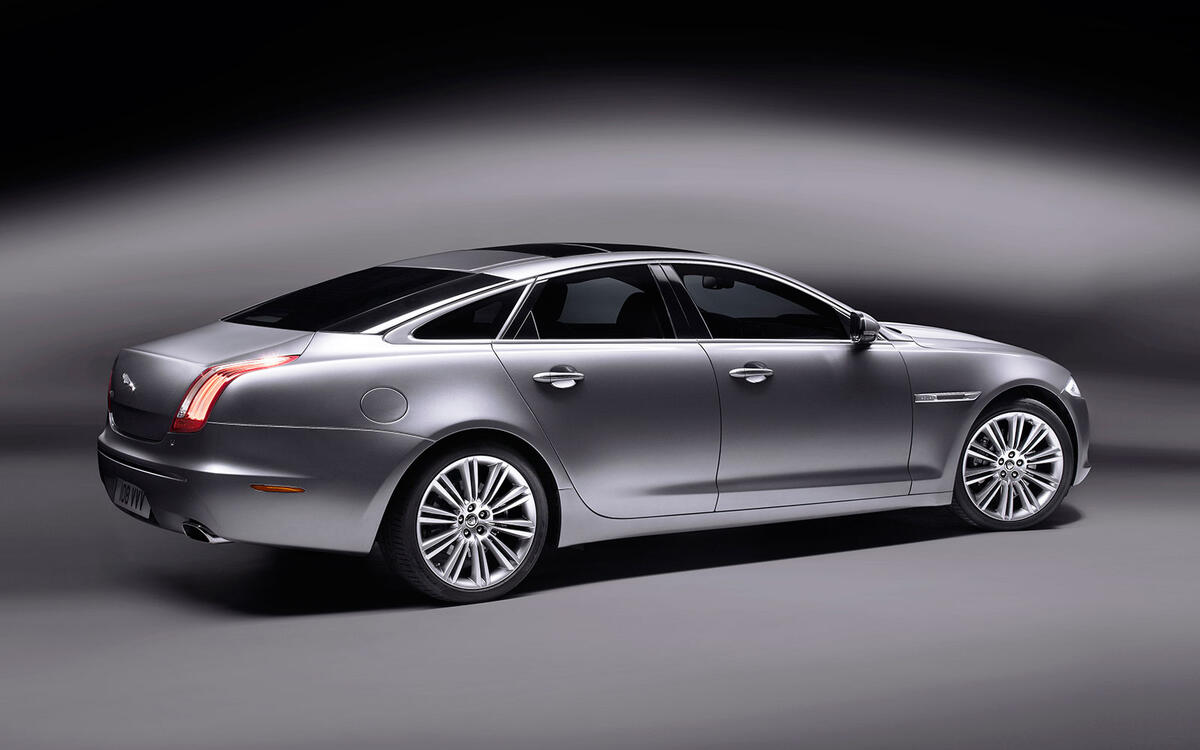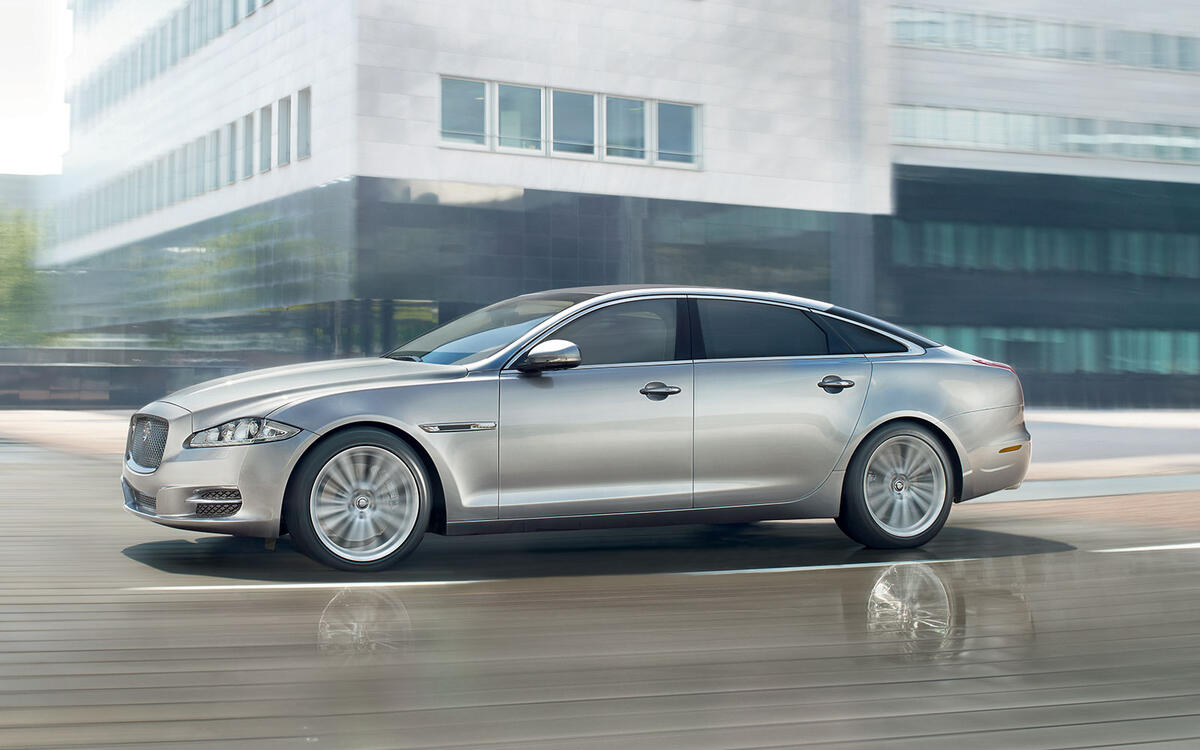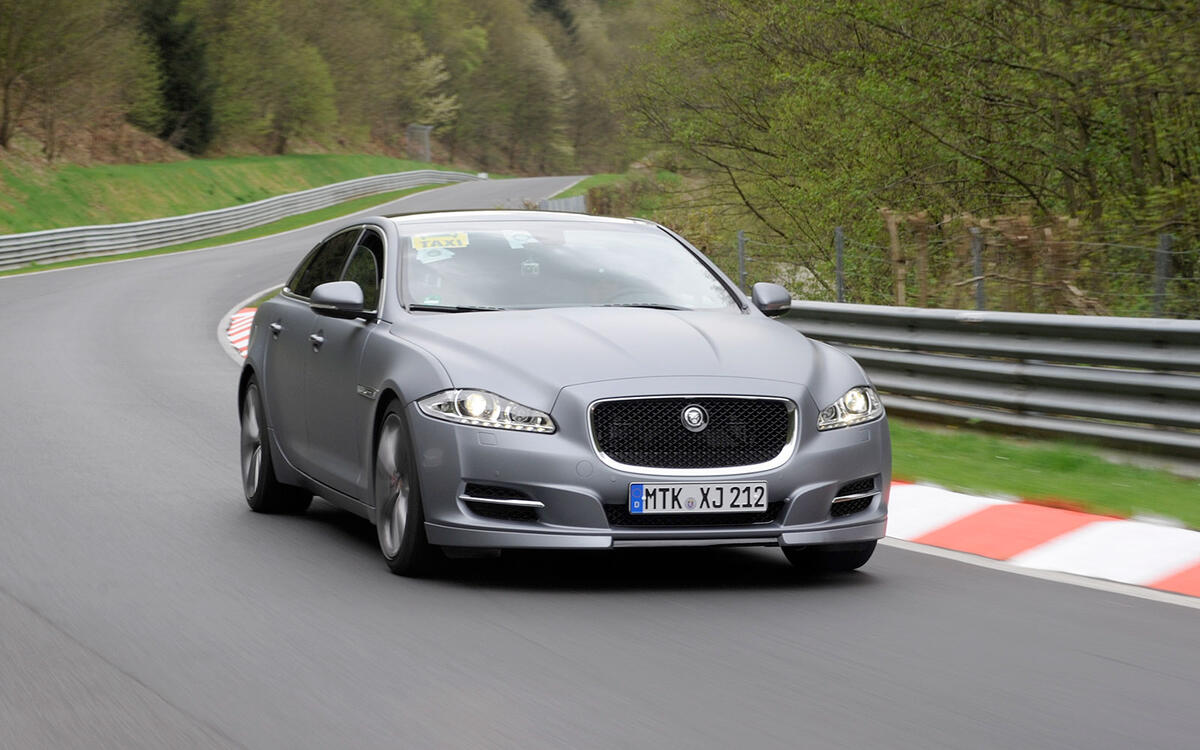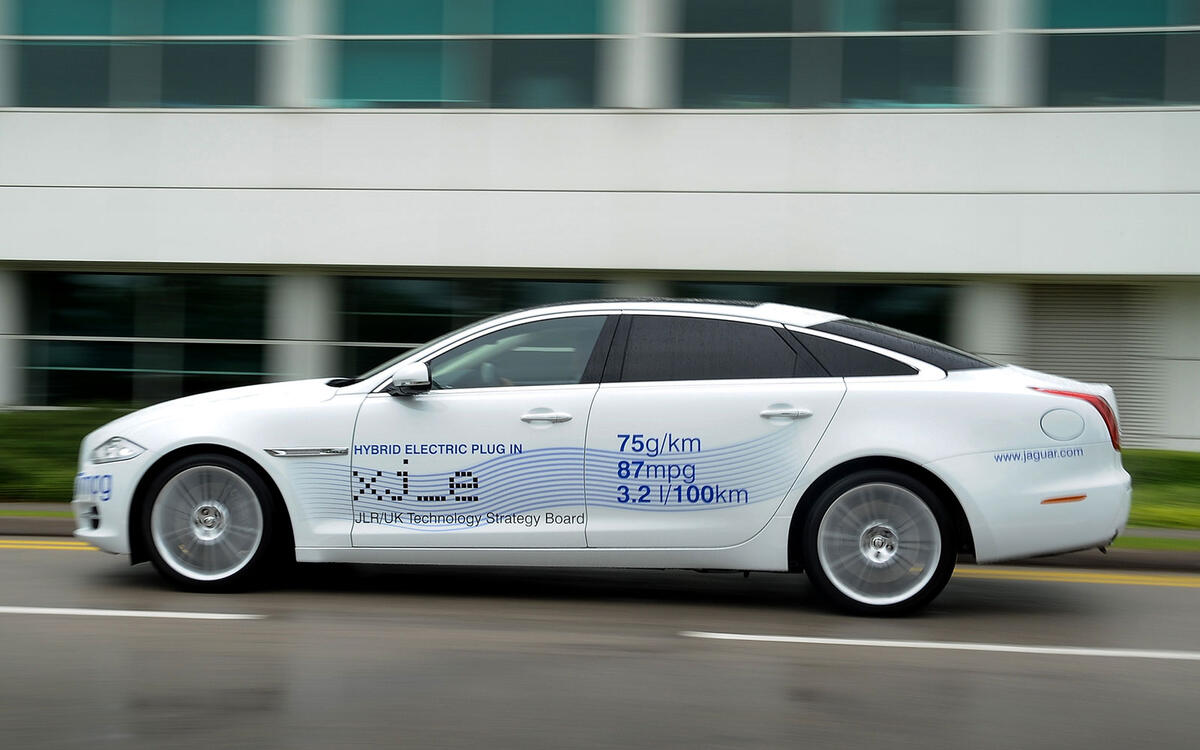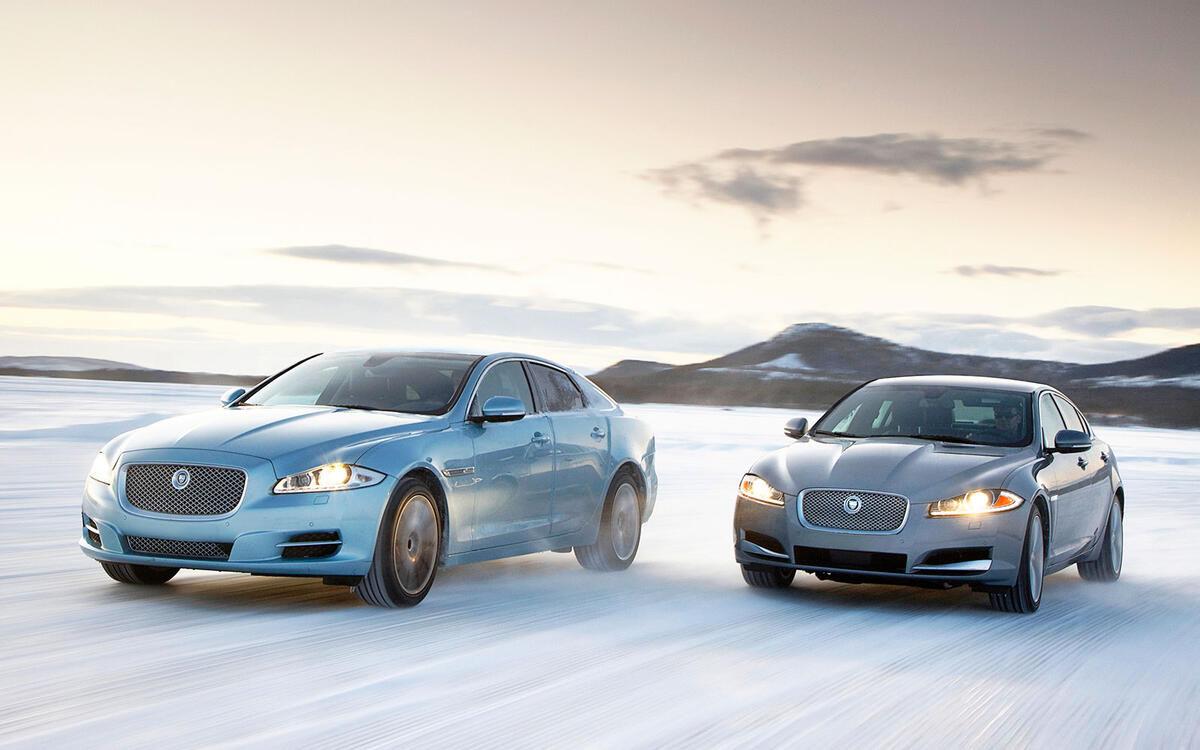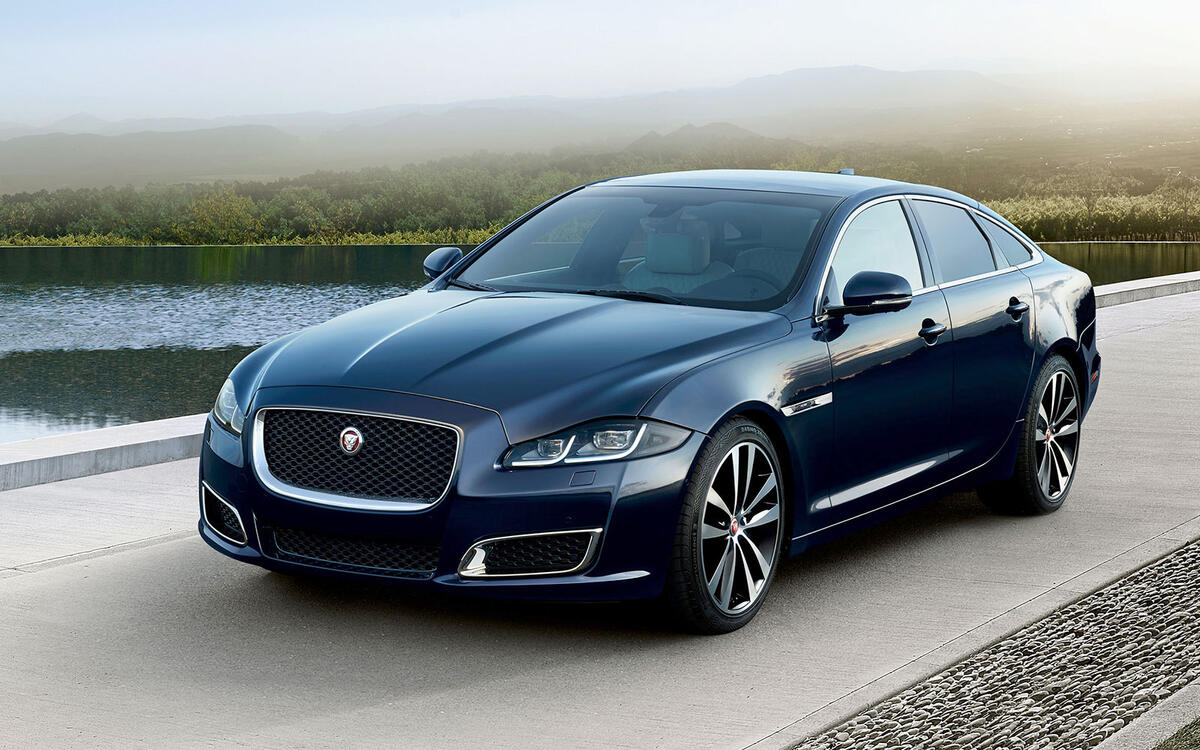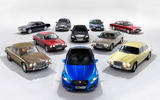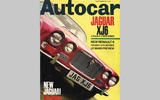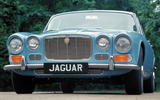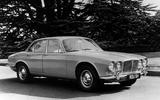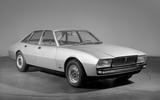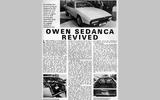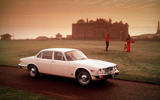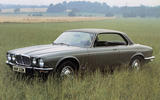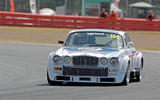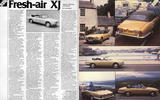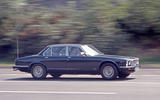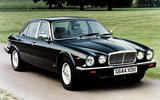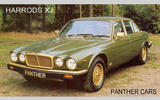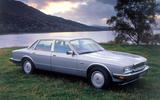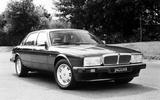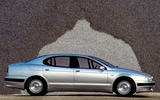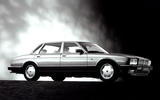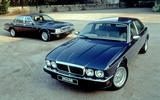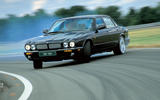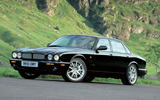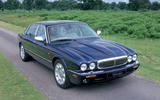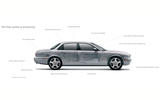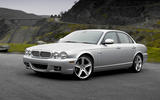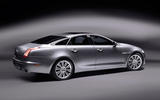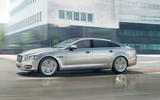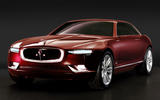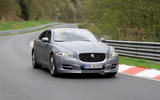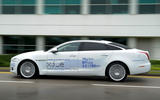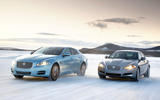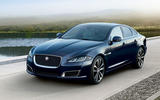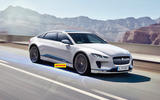 Slide of
Slide of
It was the car that revolutionised the luxury car market with its relative affordability, sleek design and V12 power.
Unveiled at the Earls Court motor show in London on 16 October 1968 - but seen in the pages of Autocar the previous month - the Jaguar XJ consolidated Jaguar's confusing product range, replacing the S-Type, 420, Mark 10 and 420G, although the latter soldiered on until 1970.
However, the current XJ has not long to live. The last of the current X351 generation will roll off the line in Birmingham on Friday 5th July 2019, and the next XJ - all-electric - won't be arriving just yet. However, Jaguar has just confirmed the new car will be built at the Castle Bromwich factory, along with "“a range of new electrified vehicles” at the facility.
Let's mark the occasion by looking at the XJ story produced over the last half a century – both official and unofficial:
 Slide of
Slide of
Autocar cover (1968)
This was the first glimpse that Autocar readers got of the new Jaguar saloon, powered by the XK straight-six engine in 2.8 or 4.2-litre forms. Originally developed as the XJ4 (XJ being short for eXperimental Jaguar), the car started out as a two-door four-seat grand tourer, but by the mid-sixties the decision had been taken to launch a four-door saloon instead.
 Slide of
Slide of
The XJ arrives (1968)
As soon as the XJ went on sale in autumn 1968 a lengthy waiting list developed, not because the new saloon was particularly revolutionary – but because it offered so much in return for so little. At £1797 for the 2.8-litre car and £2398 (and $6465 in America) for the 4.2, the BMW 2800 and Mercedes S-Class cost around half as much again.
 Slide of
Slide of
Daimler Sovereign (1969)
The original Daimler Sovereign was a rebadged Jaguar 420 and in 1969 the name was revived for those who preferred a fluted grille on their XJ6's nose. Buyers paid for the privilege though; even though the differences were restricted to minor trim changes an XJ6 4.2 with overdrive cost £2714 in Daimler form, but just £2475 as a Jaguar.
 Slide of
Slide of
Jaguar XJ12 (1972)
Four years into its life the XJ became the world’s only mass-produced 12-cylinder four-door car and, with a top speed of 140mph, it was also the fastest four-seater of its time. There were Jaguar XJ12 or Daimler Double Six options; the latter was a Daimler brand that had first been used in the 1920s. The 12-cylinder engine displaced 5.3 litres and with four Zenith-Stromberg carburettors was rated at 265bhp.
 Slide of
Slide of
A longer XJ (1972)
In September 1972, in response to criticisms of limited rear-seat leg room, Jaguar added an extra four inches (10cm) to the wheelbase. At first this was available only in Daimler Double-Six form but within a year all XJ6s and XJ12s featured the longer wheelbase and the short-wheelbase XJ was no more.
 Slide of
Slide of
Pininfarina XJ12 (1973)
Once the XJ had launched, Jaguar was already working on a successor. Jaguar was part of British Leyland which first worked with Pininfarina in the days of BMC (the A40 Farina launched in 1958). The Italian design house was asked to come up with a proposal and the result was this boxy saloon unveiled at the 1973 London Motor Show.
The project seemingly went nowhere, but the XJ40 that appeared 13 years later featured hints of this still-born concept.
 Slide of
Slide of
Owen Sedanca (1973)
Posh car dealer HR Owen commissioned Chris Humberstone to design a two-door GT using an XJ platform and 4.2-litre running gear, then coachbuilder Williams & Pritchard built a prototype using hand-beaten aluminium. The oil crisis and an £8500 price tag meant just three cars were made; the prototype plus two Sedancas built by Panther. All three survive.
 Slide of
Slide of
Jaguar XJ Series 2 (1973)
Jaguar played it safe when it came to updating the XJ. When the Series I became the Series II in 1974, the changes were limited to a shallower grille, reprofiled wings and a revised dashboard. Raised bumpers were also fitted to comply with US safety regulations. Power windows and central locking became standard equipment.
With the 2.8-litre engine having been killed off with the Series I's demise, the Series II initally came in 4.2-litre form only; a 3.4-litre model was added in April 1975.
 Slide of
Slide of
Jaguar XJ Series 2 coupé (1975)
The Series 2 was the only XJ to be offered in two-door form; all other XJs have been four-door saloons. It's easy to see why: the XJC was first shown in October 1973 but didn't reach showrooms for another 18 months such were the production engineering challenges caused by its striking design. Using the original short-wheelbase platform, the XJC (also offered in Daimler form) came with 4.2-litre six- or 5.3-litre 12-cylinder engines, the latter in fuel-injected form for the first time.
Undeniably handsome, 10,000 were made until 1977, and its rarity and stylish design means survivors are today appreciating. Decent examples today cost from £20,000 in the UK and $20,000 in the US.
 Slide of
Slide of
Broadspeed Jaguar XJC (1976)
Jaguar announced in March 1976 that it was going to compete in that year's European Touring Car Championship with a pair of Ralph Broad-prepared V12-engined XJCs. But the cars were too heavy to be competitive so the next year another pair of cars were built with some of the weight taken out. But still the cars weren't competitive and also unreliable, and after just two seasons British Leyland realised that racing was not the XJ's forté.
 Slide of
Slide of
Jaguar XJ Series 2 convertible (1977)
Jaguar has never offered an open-topped XJ but the availability of a coupé meant it was a lot easier for coachbuilders to slice the roof off to offer their own XJ convertibles. The best-known converters were Lynx and Avon but others around the globe also created rag-top XJs, in some cases in the 1990s which is why several have had further work to make them look like Series III convertibles.
 Slide of
Slide of
Jaguar XJ Series 3 (1979)
For many this is the definitive XJ with its classic looks, much improved build quality and appealing colours. It was little more than a Series II that went under the knife courtesy of Pininfarina which adjusted the roof line, incorporated more glass and tidied up the nose.
The seats, dashboard and tail lights were also redesigned and as before there were 3442cc, 4235cc and 5343cc engine options, the latter being the V12. The US market got a super-luxury Vanden Plas model for the 1982 model year.
 Slide of
Slide of
Jaguar XJ Series 3 V12 (1979)
The last Series 3 XJ6 had been built in 1987 but for those with pockets deep enough to buy and run a V12 saloon, the XJ12 soldiered on right the way through to 1991. As with all XJs, a Daimler option was sold alongside the Jaguar right up to the end; indeed, while the Jag was killed off in 1991, the Daimler Double-Six survived until into 1992.
 Slide of
Slide of
Jaguar XJ Series 3 estate (1980)
Only Mercedes and Volvo offered posh estates in 1980 which is why Ladbroke-Avon engineered this load-lugging XJ which married dubious styling with massive practicality. With the conversion priced at a hefty £7475 (plus another £475 if you wanted rear-facing seats in the boot) there were few takers. The plan was to build 250 XJ estates but it seems that no more than 20 were actually made, each using a tailgate pinched from a Renault 5, of all things.
 Slide of
Slide of
Harrods Jaguar XJ (1983)
Based on an XJ6 4.2 and ambitiously priced at £35,000, Panther was behind this homage to excess which was unveiled at the 1983 Earls Court motor show. Painted green and with all of the chrome gold-plated, the car was a collaboration with Harrods which agreed to promote this ultra-luxurious saloon which featured a TV, cocktail cabinet and picnic tables. Just two were sold.
 Slide of
Slide of
Jaguar XJ40 (1986)
Unbelievably, the XJ40 project had started in 1972 but as with all British Leyland programmes it suffered from chronic under-investment. When the XJ40 arrived late in 1986 it signalled the end of the XK engine; there was now the AJ6 straight-six up front, the engine having made its debut in the XJS in 1983. Buyers could choose between 2.9 or 3.6-litre engines although in Daimler form only the bigger unit was available.
 Slide of
Slide of
Jaguar XJR (1988)
The original Jaguar XJR was little more than a cosmetic exercise based on a standard XJ 3.6. Created to cash in on the success of Tom Walkinshaw's motor sport success, the XJR was the work of Walkinshaw's JaguarSport operation which was jointly owned with Jaguar. For an £8000 premium buyers got a posher cabin, a sharper chassis and sportier exterior styling – but no extra power.
 Slide of
Slide of
Jaguar XJ6 4.0 (1989)
The 2.9-litre engine wasn't powerful enough to haul along the heavy XJ6 while the 3.6-litre unit wasn't refined enough, so Jaguar got out its spanners and developed a 4.0-litre AJ6 engine. This offered more mid-range torque, better refinement and extra power too, without any appreciable fuel consumption penalty.
Of significance to the XJ story, Ford Motor Company acquired Jaguar in the same year.
 Slide of
Slide of
Jaguar Kensington (1990)
Looking much sleeker than the contemporary XJ40, the Kensington was designed and built by Giorgetto Giugiaro's Italdesign as a potential XJ40 replacement. Based on an XJ12 platform, the concept was created without any input from Jaguar which didn't give the project its blessing. As a result the Kensington disappeared from view after doing the show circuit, although the original Lexus GS, another car designed by Giugiaro, looks rather similar…
 Slide of
Slide of
Jaguar XJ Majestic LWB (1990)
All the best luxury cars come with a choice of wheelbases which is why Jaguar teamed up with Coventry firm Project Aerospace to stretch the XJ by 125mm (5in), all of it behind the B-pillar. The roof line was also raised and the back window size increased; 3.2 and 4.0-litre AJ6 engines were offered and later on there would be a V12 option too.
 Slide of
Slide of
Jaguar XJ40 V12 (1993)
The XJ40 hadn't been designed with an engine bay wide enough to accept a V-configuration engine; Jaguar engineers didn't want a Rover V8 to be foisted upon them so they ensured the engine bay couldn't accommodate such a powerplant, stating that the V8 would compromise structural crash protection. As a result the Series III V12 soldiered on alongside the six-cylinder for an incredible seven years.
Finally in 1993, under pressure from Ford who wanted Jaguar's range-topper with both a powerful engine and a curent model body, a V12-powered XJ40 went on sale with Jaguar and Daimler variants available, but was only on the market for just over a year.
 Slide of
Slide of
Jaguar X300 (1994)
Jaguar appeared to introduce an all-new XJ in 1994, but the X300 was nothing more than a rejuvenated XJ40. The mechanicals were carried over and so was the central section of the car complete with the doors and roof. However, the front and rear ends were new and so was the dashboard. Buyers could choose between 3.2 or 4.0-litre straight-sixes (now reworked to become the AJ16 unit) or there was a 6.0-litre V12. All cars came with four circular headlights, ditching the square units fitted to some XJ40s.
The X300 cost Ford US$300 million to engineer, but it brought greatly improved reliability and was cheaper to manufacture.
 Slide of
Slide of
Jaguar XJR (1994)
Things started to get more serious with the X300-based XJR because it was the first Jaguar to be fitted with a supercharger. As such the 4.0-litre AJ16 engine was boosted to a very healthy 321bhp with 0-60mph possible in just 5.9 seconds. A match for the BMW M5 dynamically, the Jag was significantly more refined and comfortable.
 Slide of
Slide of
Jaguar X308 (1997)
It was the end of an era when the X308 arrived in 1997, because it spelt the end of Jaguar's V12 engine; the V12 was elderly and being increasingly challenged by emissions rules on both side of the Atlantic. The AJ6 straight-six was also pensioned off. Jaguar had offered a straight-six since 1931 but the V8 did the same job as the six- and 12-cylinder engines.
The X308 was a strengthened and stiffened X300 with V8 power and tweaked front suspension; there were 3.2 or 4.0-litre powerplants to choose between.
 Slide of
Slide of
Jaguar XJR (1997)
The Jaguar XK8 had arrived in 1996 with a supercharged XKR option. That car's mechanicals were effectively transplanted into the XJ saloon bodyshell to create a car that was blisteringly quick, handled superbly yet it was still comfortable. Up front was a 370bhp supercharged 4.0-litre V8, the suspension was computer-controlled while Automatic Stability Control helped keep the car under control through fast bends.
 Slide of
Slide of
Jaguar XJR R Performance (1999)
Since the 1950s Jaguar had offered upgrades on its cars, sometimes officially and often below the counter to selected clients who probably took part in motor sport. From 1999 there was a whole menu of official upgrades possible with the launch of the R Performance programme, which allowed owners to improve areas such as the brakes, suspension and seating.
 Slide of
Slide of
Jaguar X350 (2003)
When the sixth-generation XJ appeared in 2003 it represented a radical departure for Jaguar as it featured a bonded and riveted aluminium structure. Compared with the X308 this cut the bodyshell's weight by around 40%, while power was provided by 3.0 V6 or 3.5/4.2-litre V8 petrol engines.
In order to emphasise the car's structural modernity despite its retro design, Jaguar dressed the new car in its brushed aluminium birthday suit for its 2002 Paris motor show debut (pictured).
 Slide of
Slide of
Jaguar XJR (2003)
For those who wanted the ultimate in performance there was another supercharged V8 XJ on offer, still called the XJR but now featuring a 4.2-litre powerplant with a rather fruity 400bhp. Three years later a more luxurious special edition was launched, called the XJR Portfolio, limited to just 100 units.
 Slide of
Slide of
Daimler Super Eight (2003)
XJ buyers could still choose a Daimler edition if they wanted one. Known as the Eight (or in Jaguar form the Super V8) this was the most expensive XJ of the lot when the X350 made its debut; it cost even more than the XJR and was only available in long-wheelbase form with a supercharged 4.2-litre V8 engine.
 Slide of
Slide of
The first XJ diesel (2005)
The world of the luxury car had changed radically since the XJ made its debut in 1968. Petrol-engined XJs rarely gave much over 20mpg with the V12 often delivering just half this. By fitting a 2.7-litre V6 diesel engine developed between Ford and France's PSA, 35mpg was a realistic prospect thanks to that lightweight bodyshell.
 Slide of
Slide of
Armoured XJ (2005)
Accepting that the XJ was a preferred mode of transport for some very high-profile people, Jaguar introduced an official armoured edition late in 2005, produced in conjunction with Centigon. Priced from £199,000, the armoured XJ looked no different from a standard car and came only in long-wheelbase form with completely reworked brakes and suspension, run-flat tyres and bullet-proof glass.
The armoured XJ became the primary form of transport for British prime ministers, starting with Tony Blair.
 Slide of
Slide of
Jaguar XJ X358 (2007)
Early in 2007 Jaguar unveiled the 2008 model year XJ and the changes were significant enough for the new model to get its own development code: X358. In reality the changes weren't that great; a new nose with a bigger bumper and reprofiled grille were the most obvious updates, but there were also now vents in the front wings, new rear lights and a refreshed rear bumper too. The mechanicals were carried over from the X350.
 Slide of
Slide of
Jaguar X351 (2009)
The luxury car segment was fiercely competitive by the time the all-new XJ arrived in 2009. The Audi A8, BMW 7 Series and Mercedes S-Class were class acts and so was the Lexus LS. Jaguar's answer was a car that divided opinion with its sloping rear end but at last the XJ looked modern rather than traditional and its aluminium construction was still cutting-edge.
By this time Ford, wishing to greatly simplify its life, had sold Jaguar together with sister company Land Rover to India's Tata.
 Slide of
Slide of
Jaguar Sentinel (2010)
As with the previous XJ there was an armour-plated option for the new model, which was now called the Sentinel. Developed to offer B7 levels of ballistic protection the Sentinel came with a naturally aspirated 5.0-litre V8 rated at 380bhp which could take the 3.3-tonne (7260 lb) saloon from a standstill to 62mph in 9.7 seconds and on to a top speed of 122mph.
 Slide of
Slide of
Jaguar 99 (2011)
Bertone decided to create a Jaguar for the modern age with the Jaguar 99 (it was made 99 years after Bertone was incorporated) – but sadly once the concept had been unveiled at the 2011 Geneva motor show Jaguar said that it wasn't interested in working with Bertone on a new large saloon. Using some of Jaguar's traditional styling cues the Jaguar 99 concept featured a petrol/electric hybrid powertrain with a 1.4-litre engine and twin electric motors.
 Slide of
Slide of
Jaguar Nürburgring Taxi (2012)
One of the most surreal experiences I've ever had was being whisked around the Nürburgring, strapped into the back of Jaguar's XJ Supersport fitted with Sport and Speed Pack options – but otherwise left mechanically standard. With the 500bhp supercharged 5.0-litre V8 capable of taking the car all the way up to 174mph, we shot past everything else on the track that day, seemingly breaking the laws of physics at every corner.
 Slide of
Slide of
Jaguar XJ_e (2012)
Although Jaguar hasn't offered a plug-in hybrid version of the X351, it has developed a fully functional prototype which was unveiled at the 2012 Goodwood Festival of Speed. Powered by a 2.0-litre engine mated to an eight-speed automatic transmission and fitted with a 12.8kWh battery pack, there was a 25-mile electric-only range and the XJ_e was capable of 0-62mph in 6.5 seconds. It was restricted to 150mph yet was capable of returning CO2 emissions of just 75g/km.
 Slide of
Slide of
The XJ gains 4WD (2012)
For a while four-wheel drive had become all the rage in the 1980s and when Audi launched its A8 in 1994 it was available from the outset with quattro technology. But it wouldn't be until 2012 that Jaguar offered the same tech on the XJ, and even then only in certain markets – which didn't include the UK but did include places where four-wheel drive was important, notably the US Northeast and Midwest, and Canada.
The all-wheel drive transmission was available only with Jaguar's supercharged 3.0-litre V6 petrol engine.
 Slide of
Slide of
Jaguar XJ50 (2018)
In April 2018 Jaguar unveiled the XJ50 to mark the car's half-century. Available in standard or long-wheelbase forms, motive power comes from a 295bhp 3.0-litre diesel engine. Tellingly, the car was unveiled at the Beijing motor show with prices starting at £74,280 in the UK.
In May 2019, Jaguar announced the end of XJ production. Sales have dwindled in recent years as the luxury saloon class has reduced in size - buyers are favouring luxury SUVs instead - and the XJ looked old compared to sharper, newer rivals from BMW, Mercedes-Benz and Audi.
The final XJ X351 will roll of the production line at Castle Bromwich in Birmingham in July 2019. But it's not the end for the XJ...
 Slide of
Slide of
The next XJ (2020)
Considering how conservative Jaguar has been in the past, the transformation in recent years has been astonishing, in terms of both interior and exterior design – along with the engineering and construction too. The all-new XJ due in 2020 will retain all-aluminium construction but it's set to be powered by batteries rather than an internal combustion engine. The electric-only XJ will have a range of over 300 miles and offers the promise of scintillating performance with the security of four-wheel drive.
The move makes sense; in the late 1980s nearly 40,000 XJs were sold per-year globally. Today, it struggles to sell a few thousand. The best selling 'luxury car' in many global markets today is often an SUV.
Another part of it is very strong competition from, especially, the Mercedes-Benz S-Class, which sells around 70,000 cars per year. In the important US market, just 93 XJs were sold in April 2019 compared to 958 sales of the S-Class. Changing to electric-power seeks to redefine the rules of the game for the XJ, and give it a chance to go back to its roots as a class gamechanger, not a follower. We wish it a lot of luck. PICTURE: Autocar Artist impression
As the current XJ comes to the end of the road, we celebrate its life - and look to its future
Advertisement

